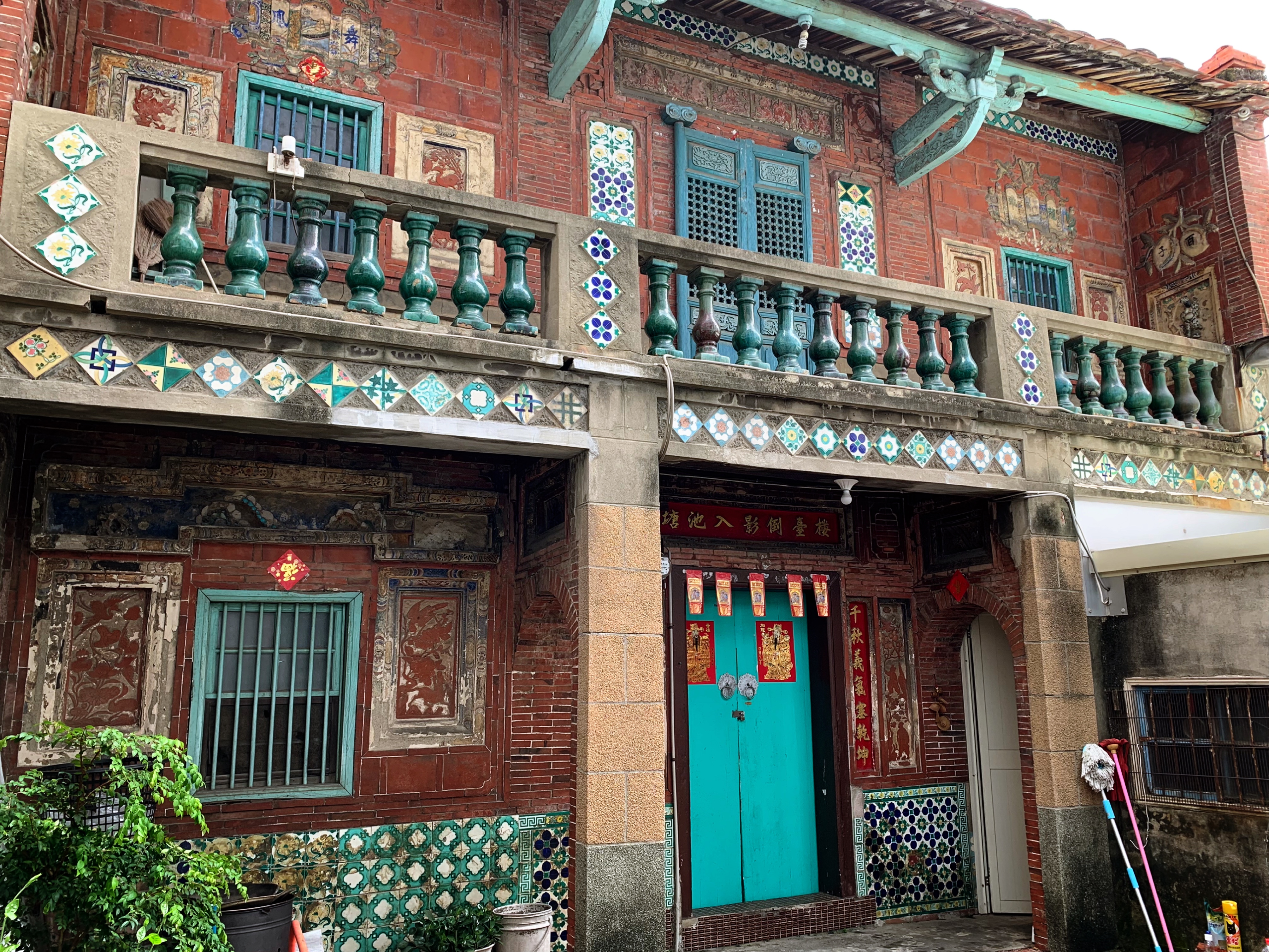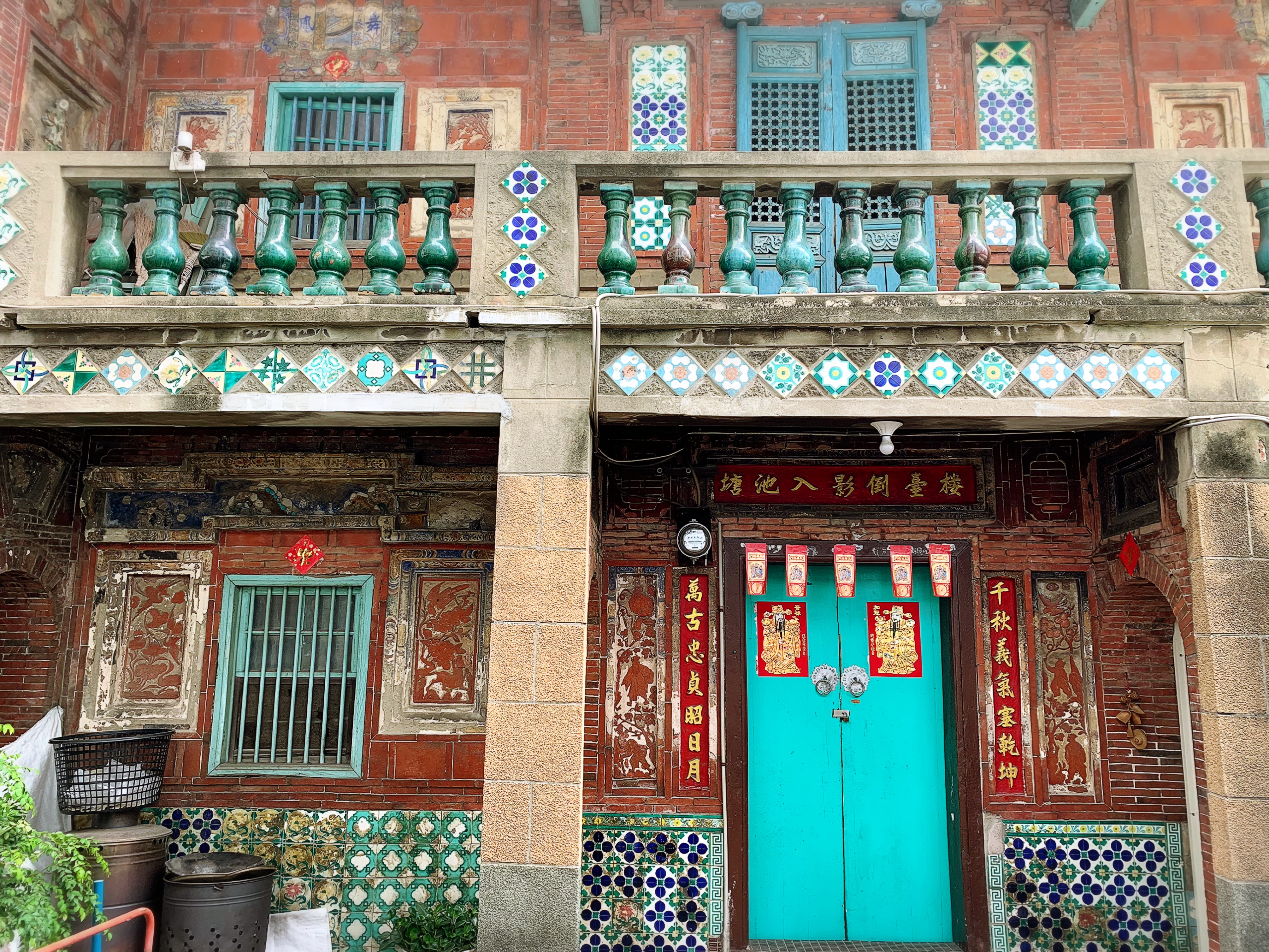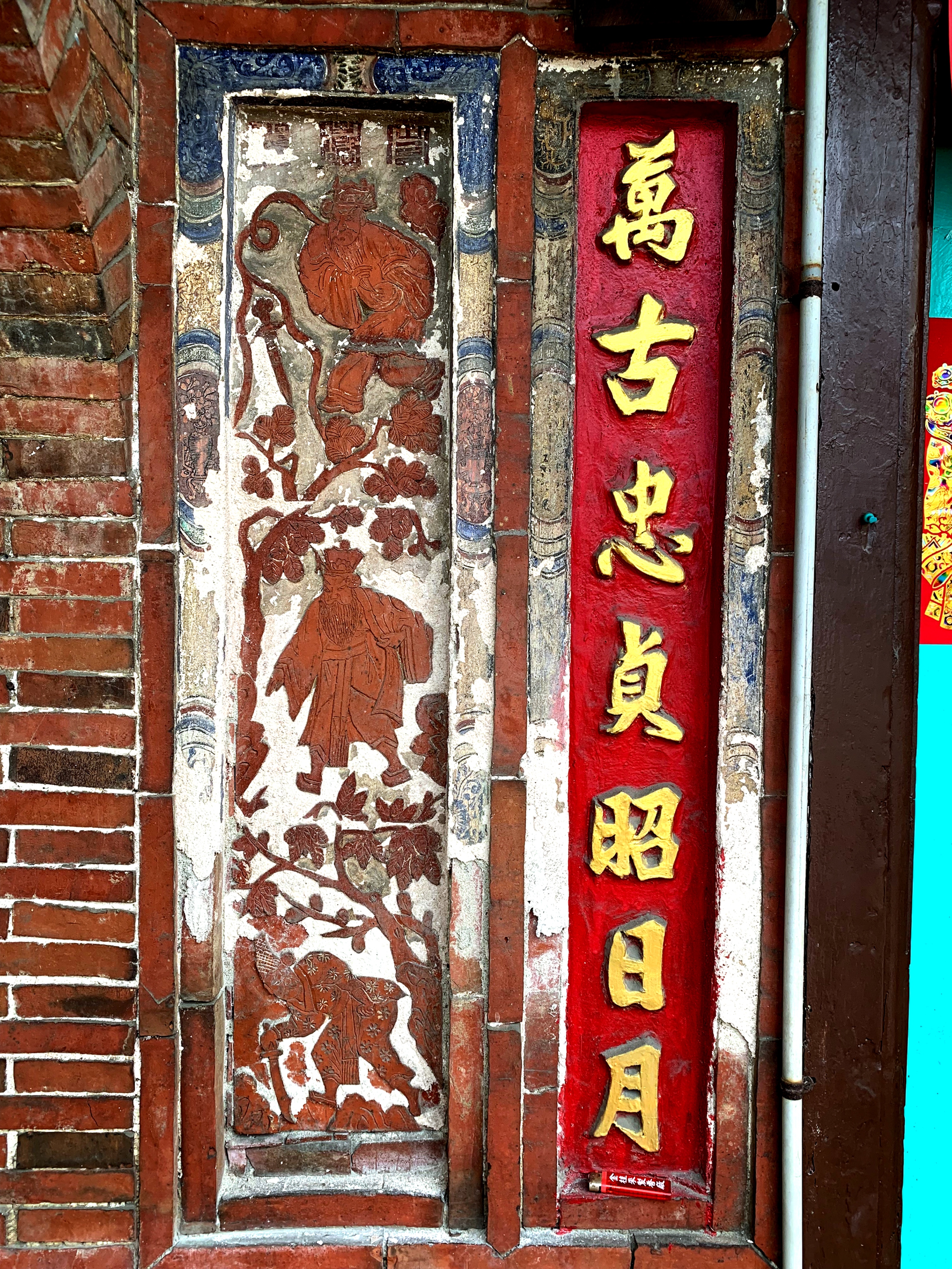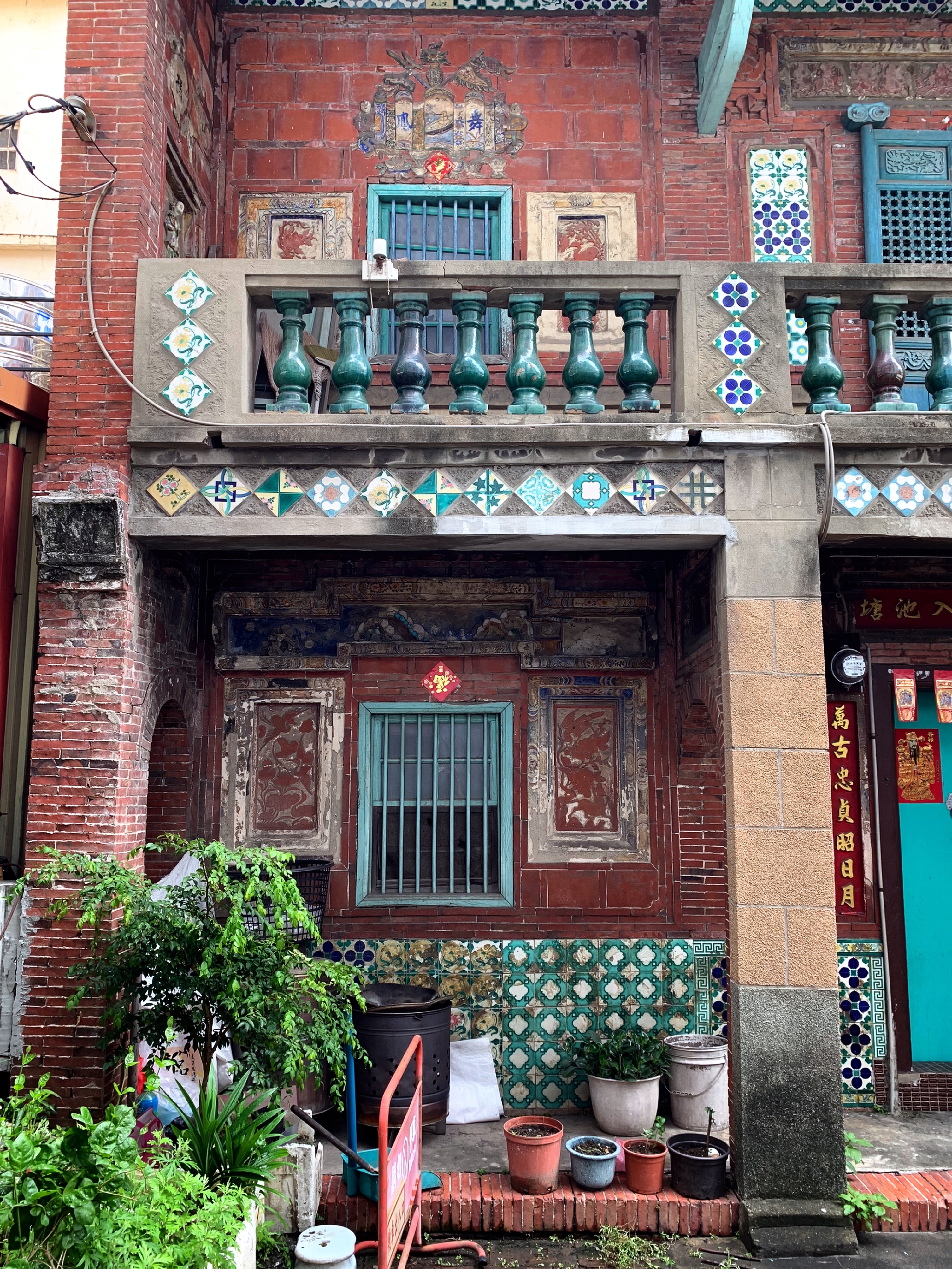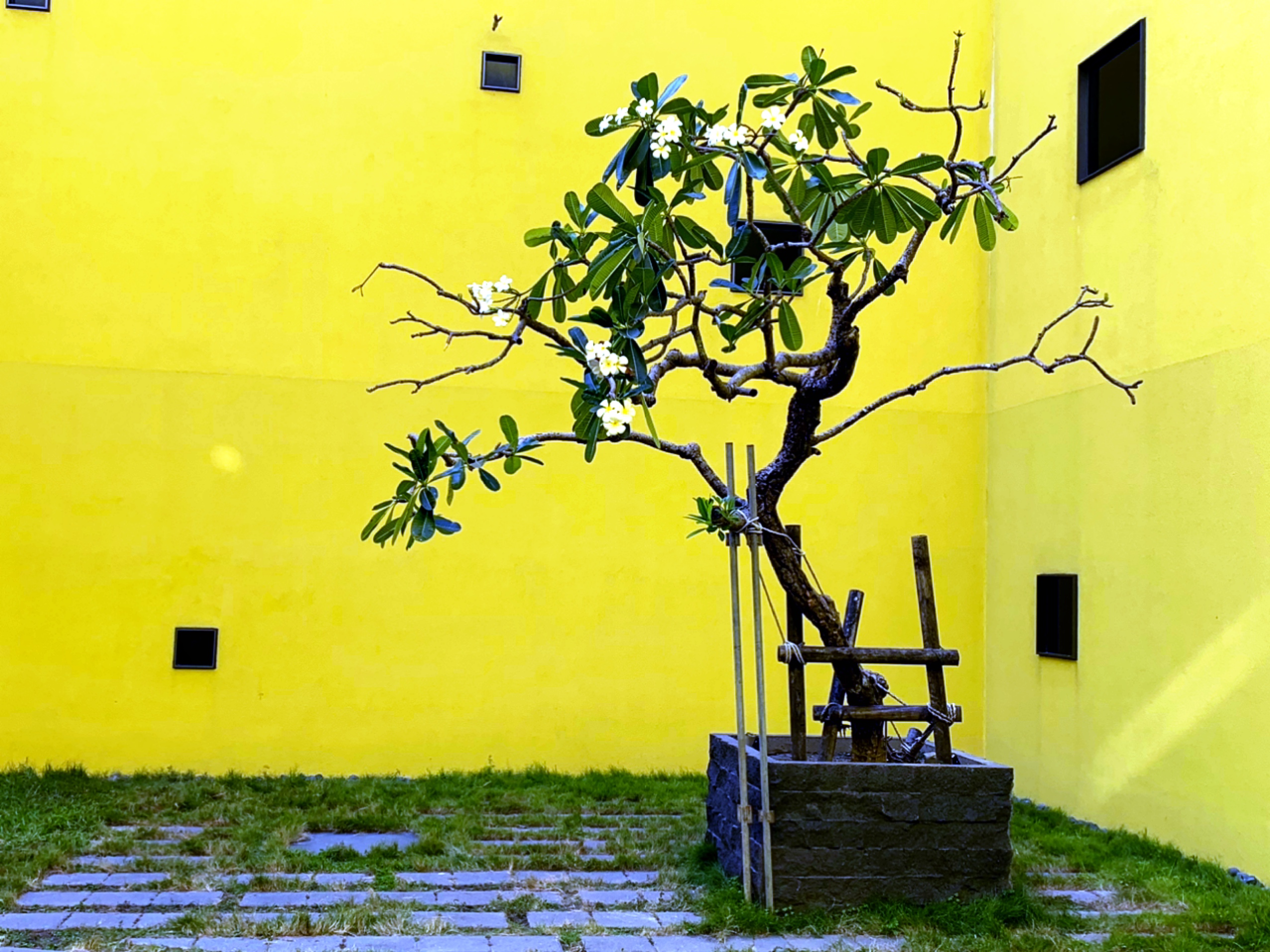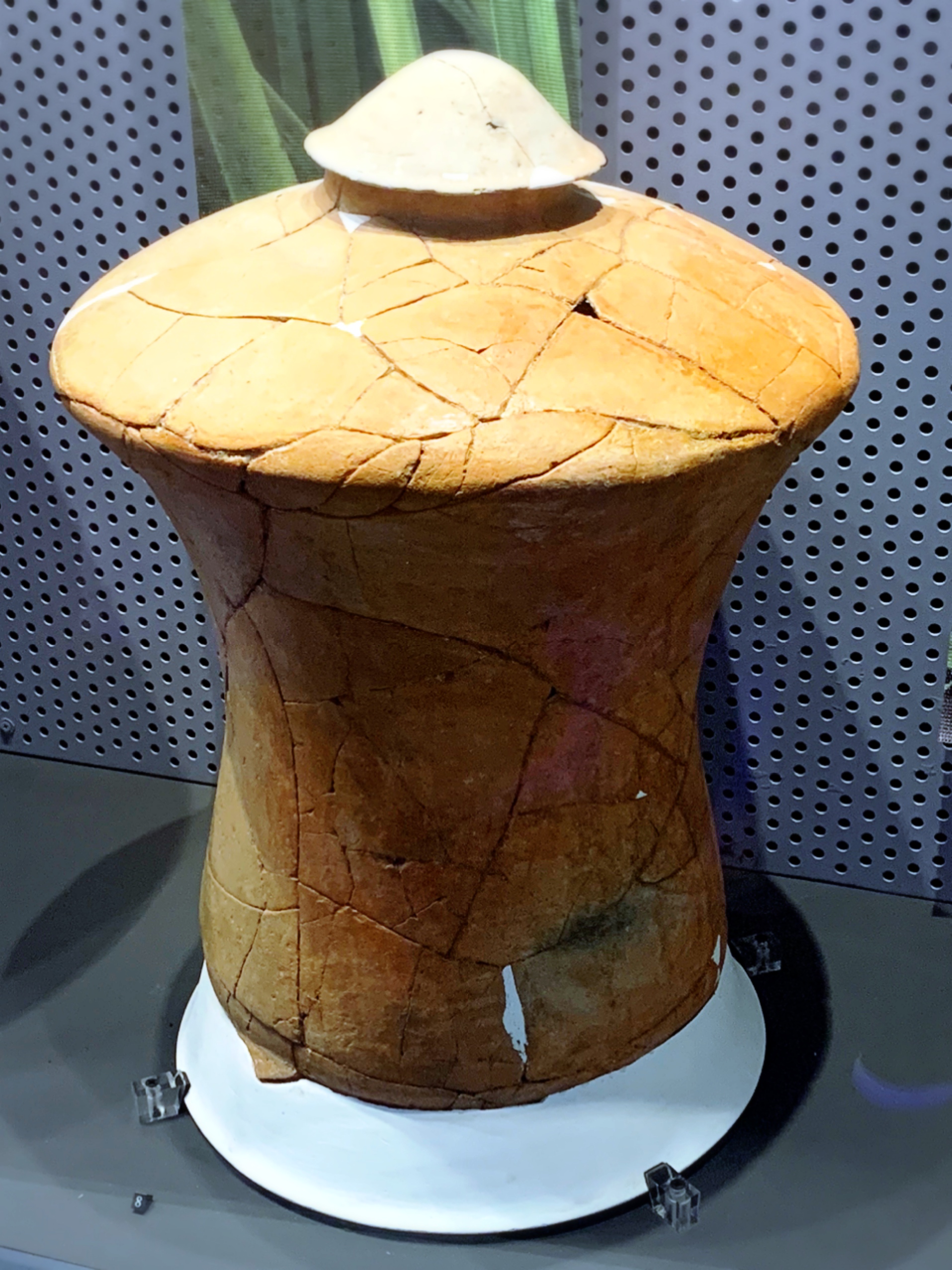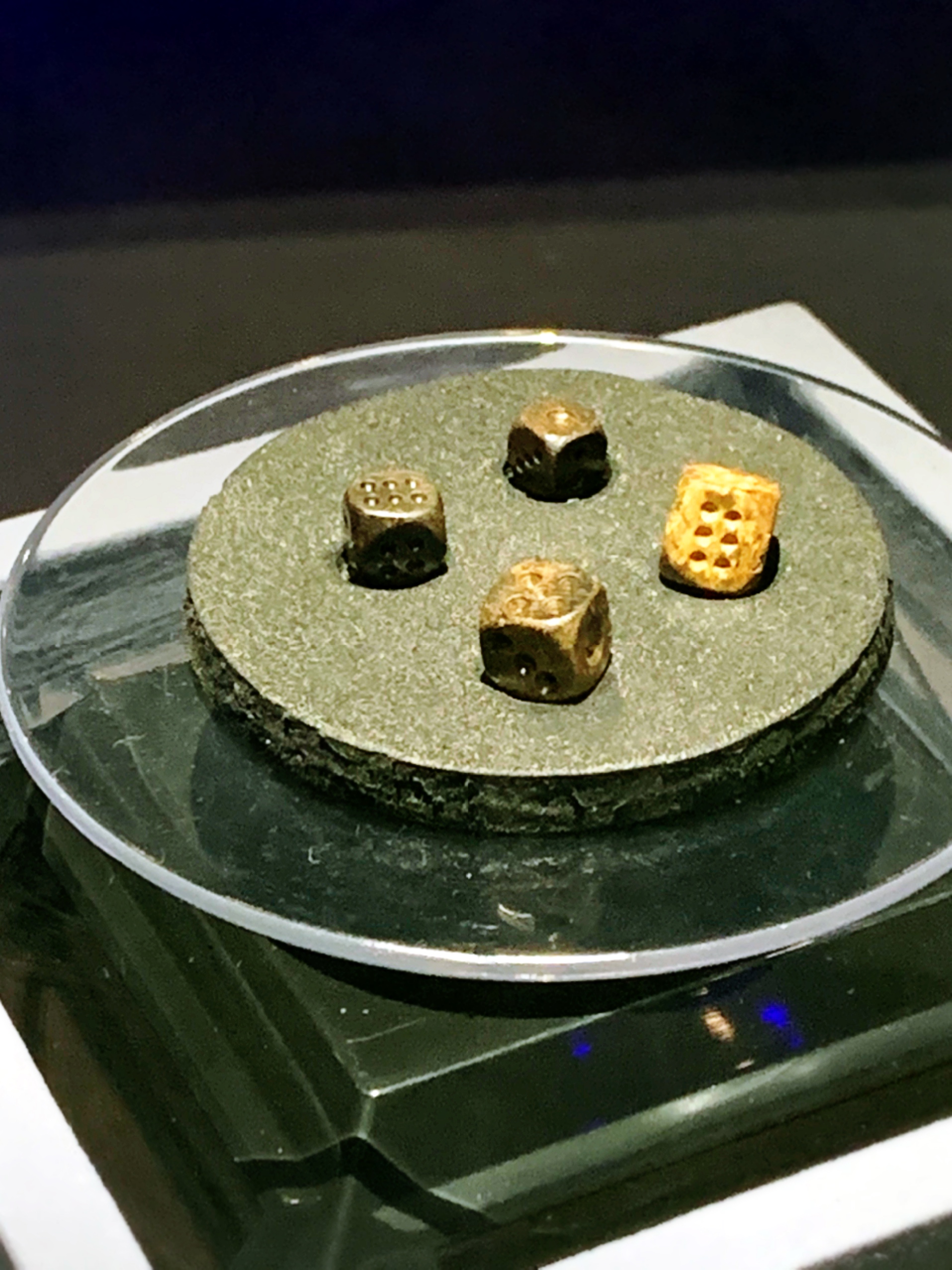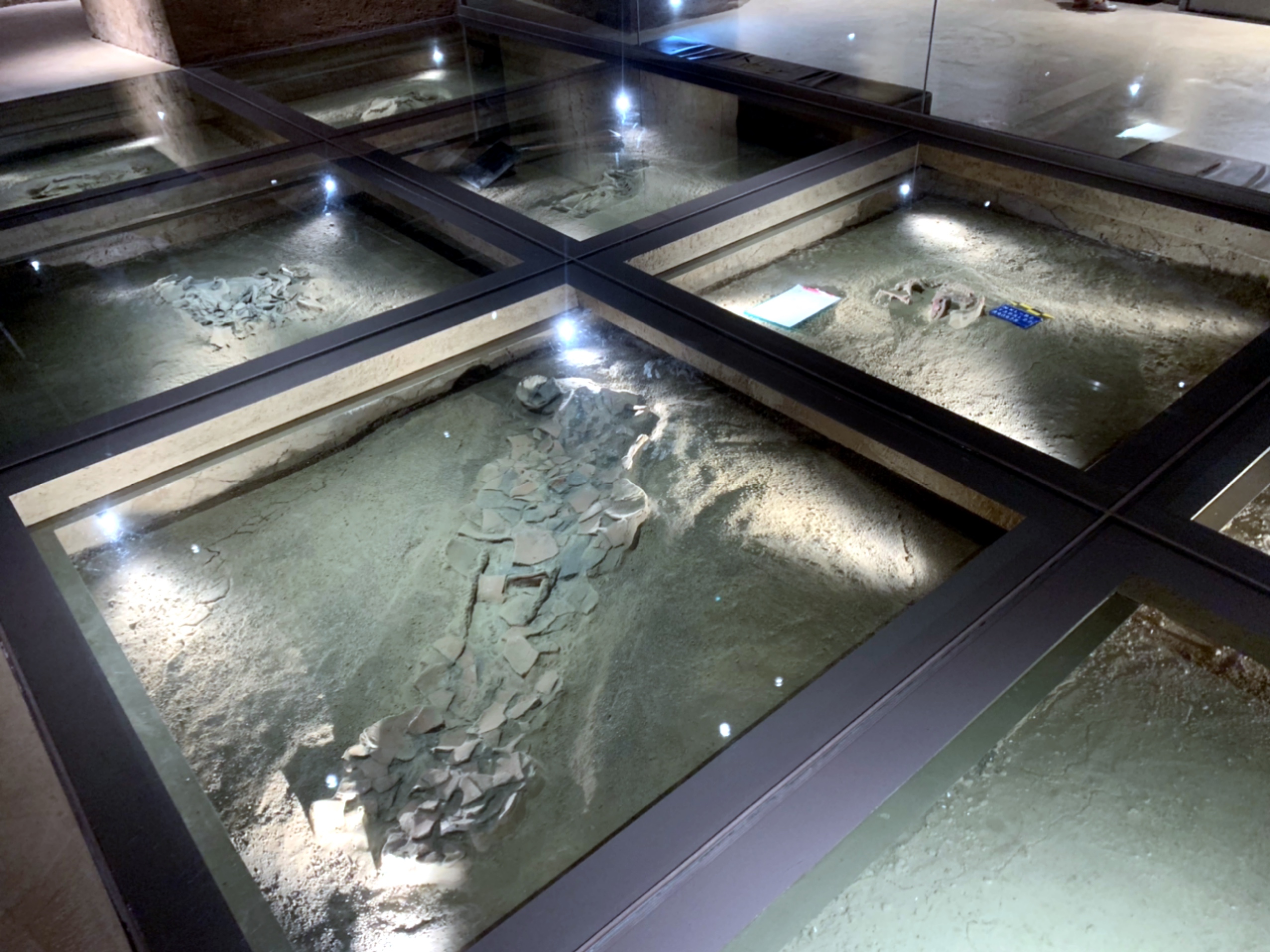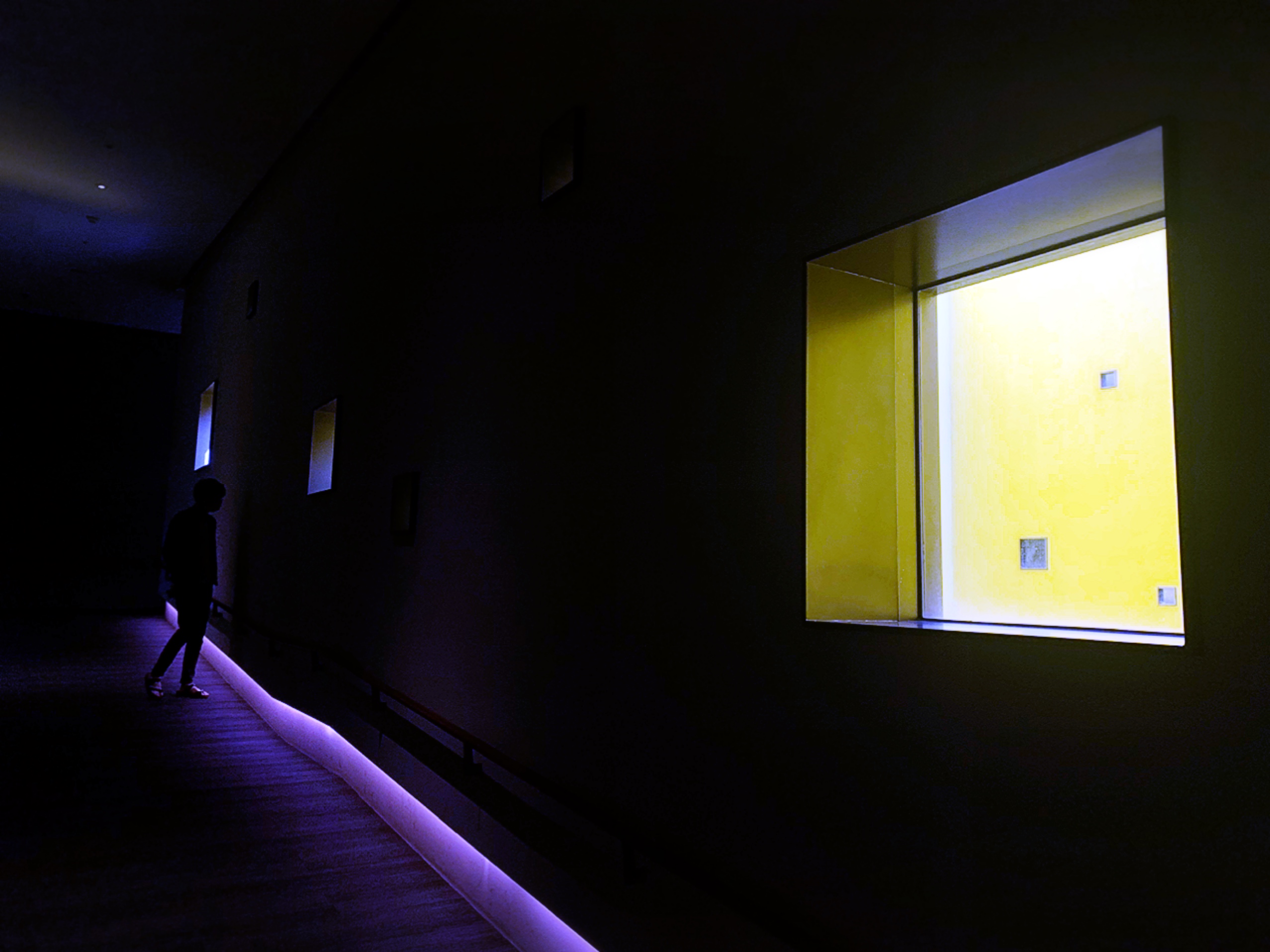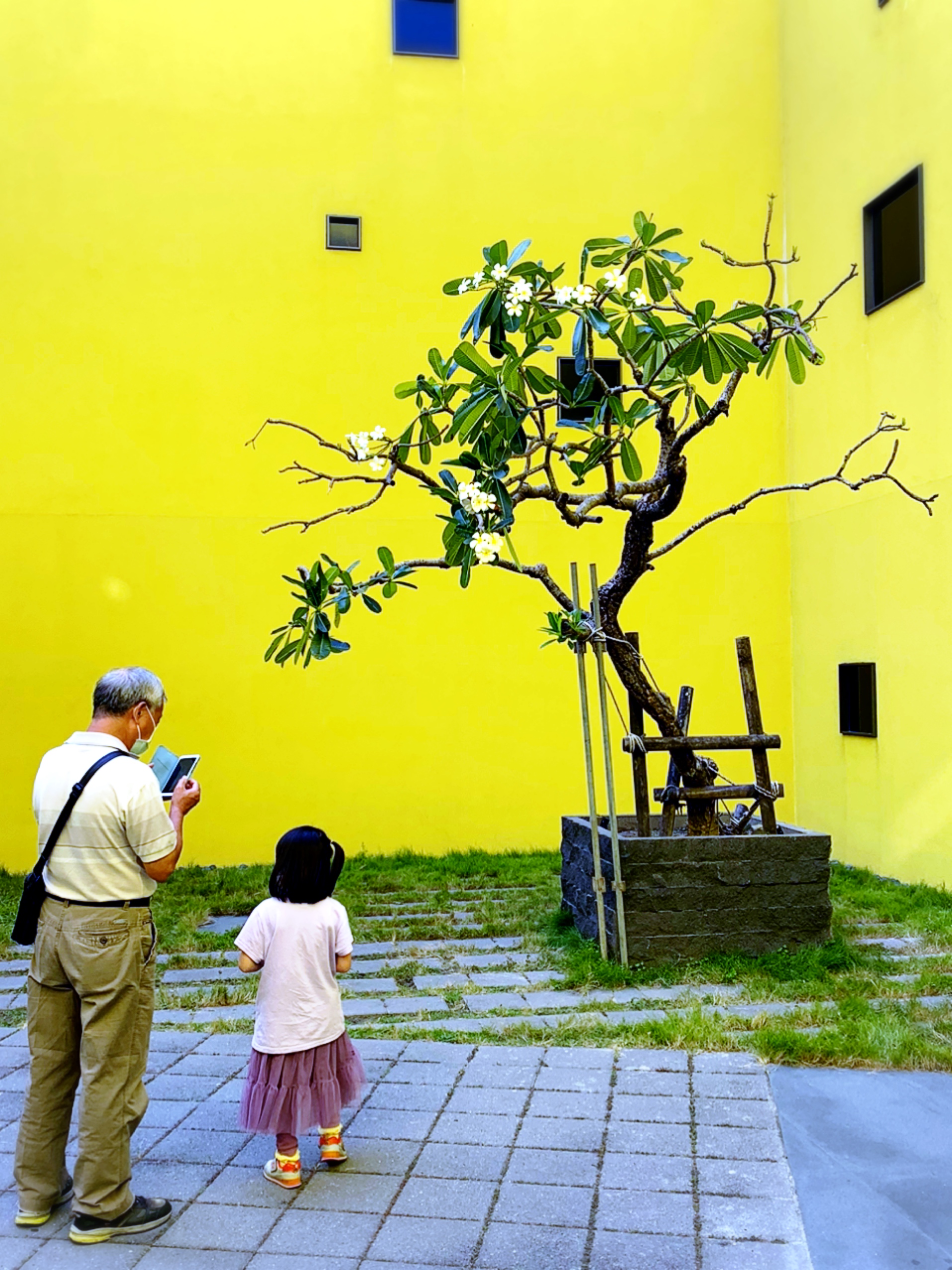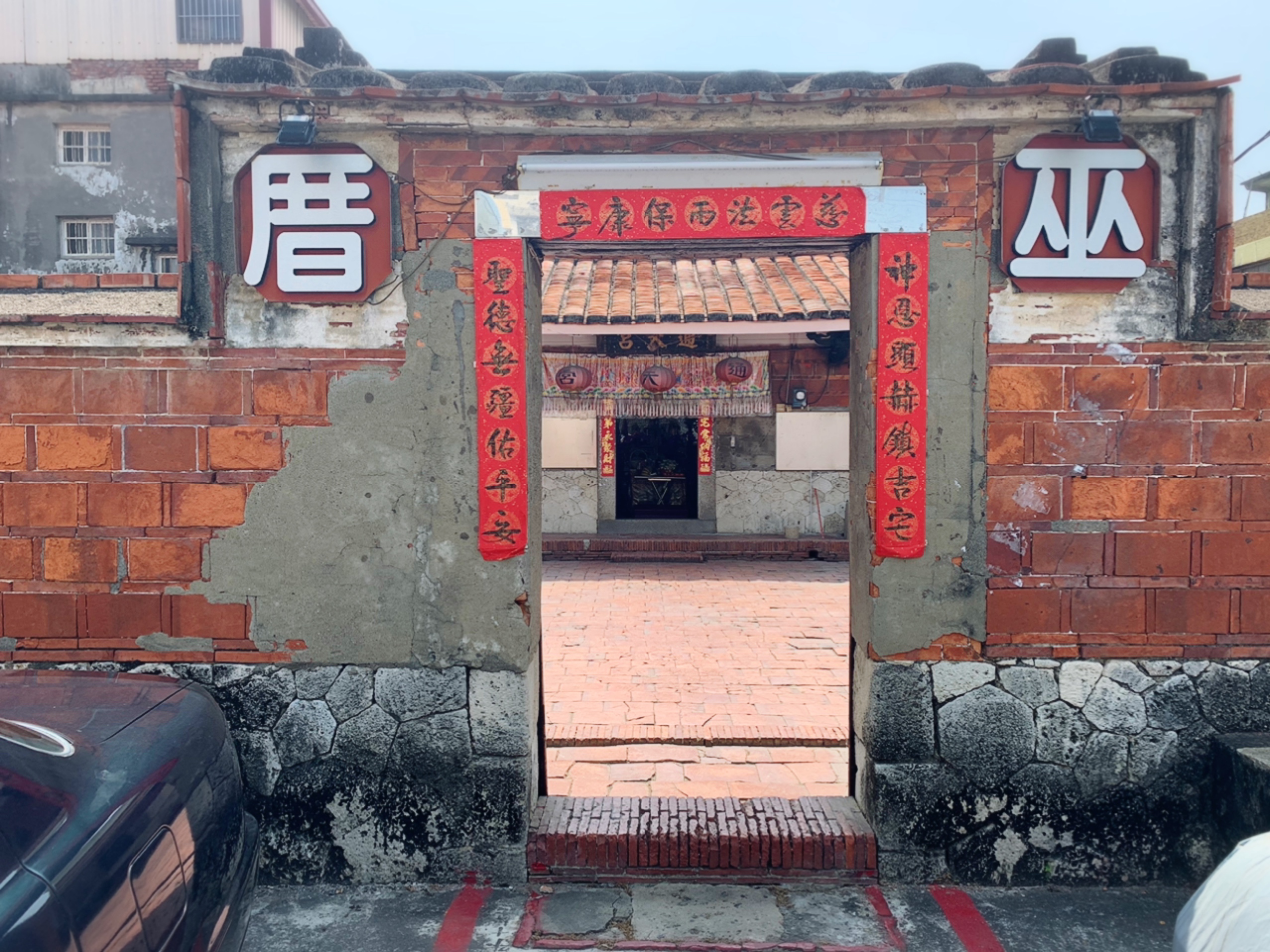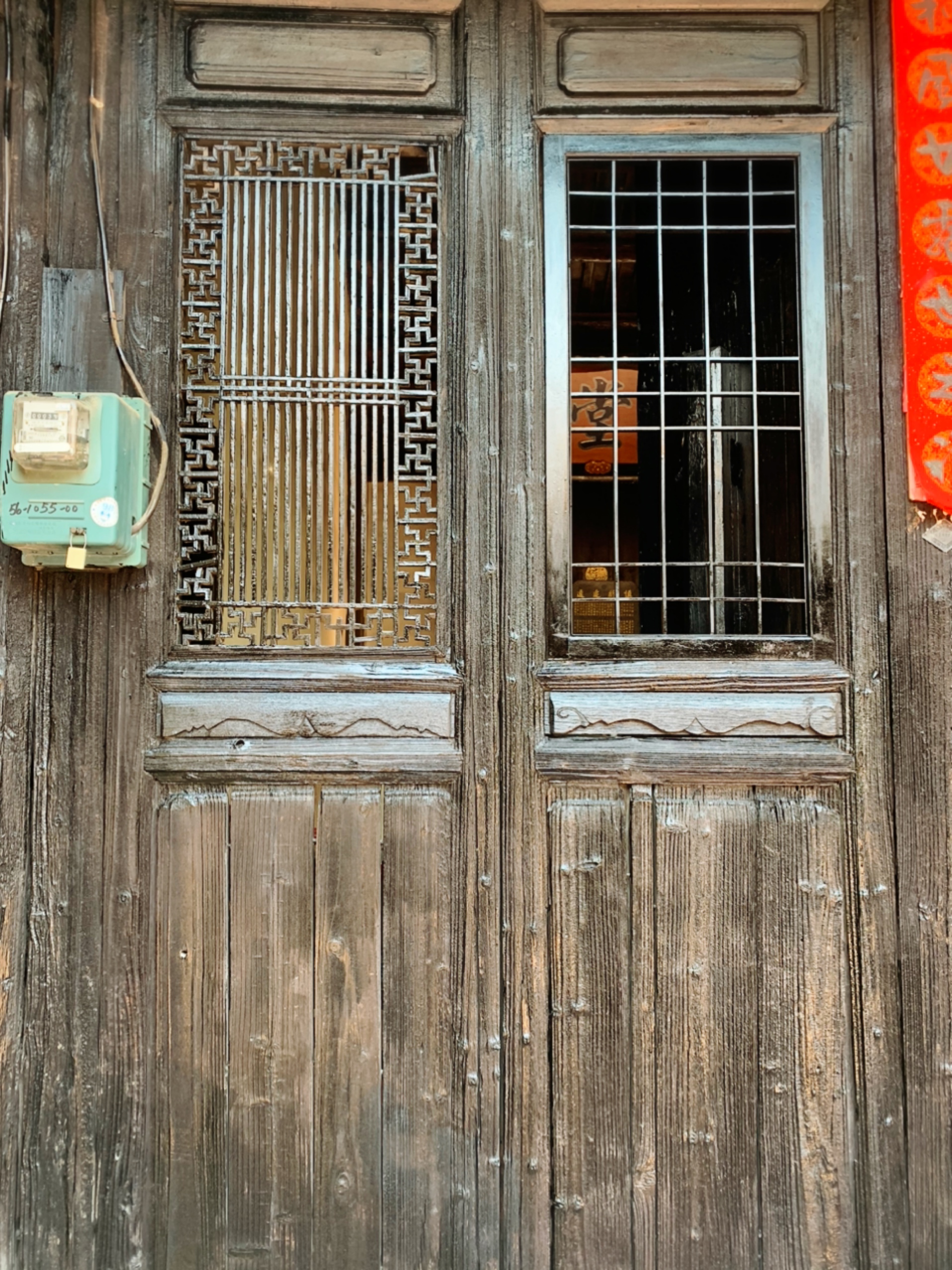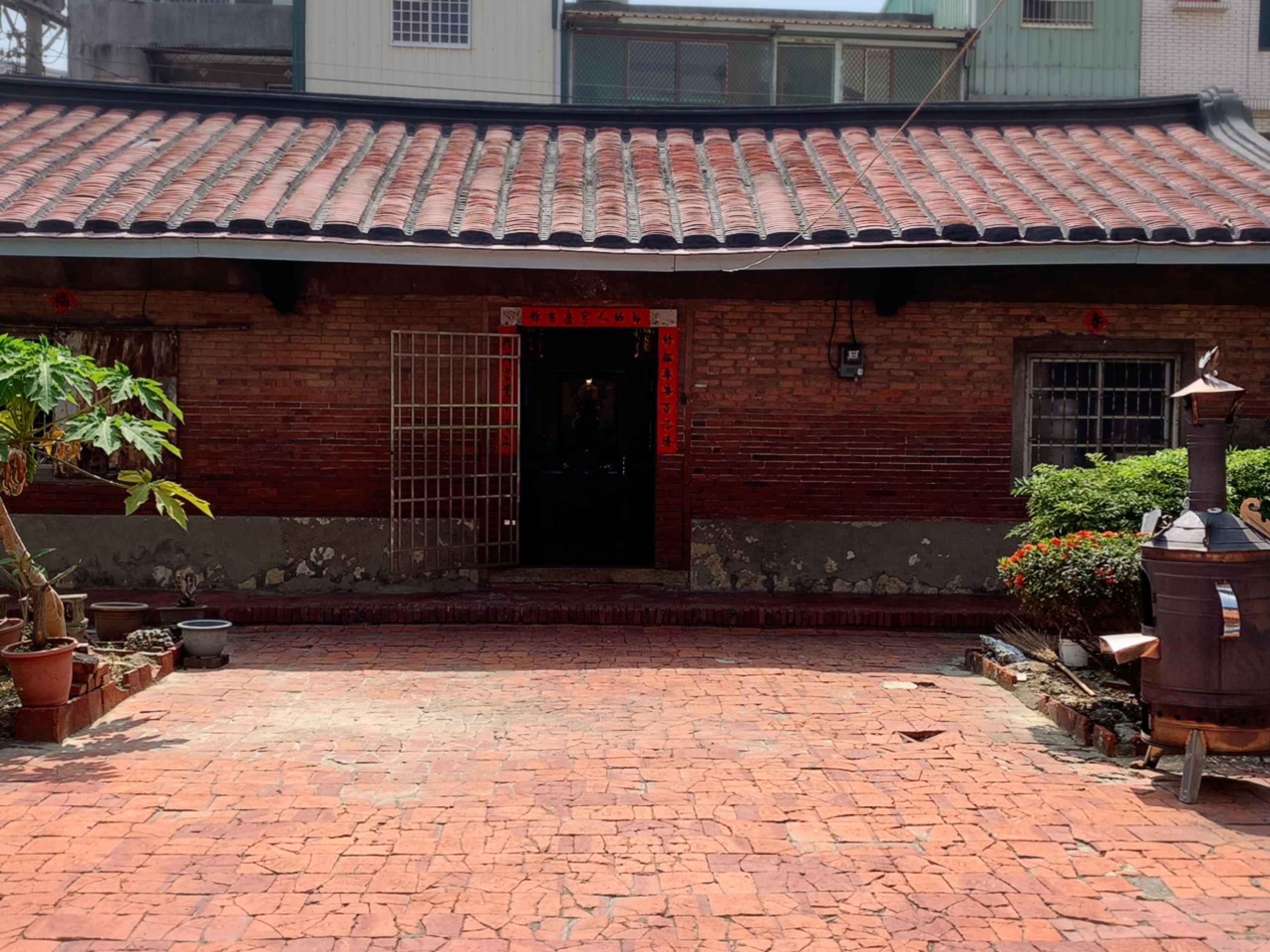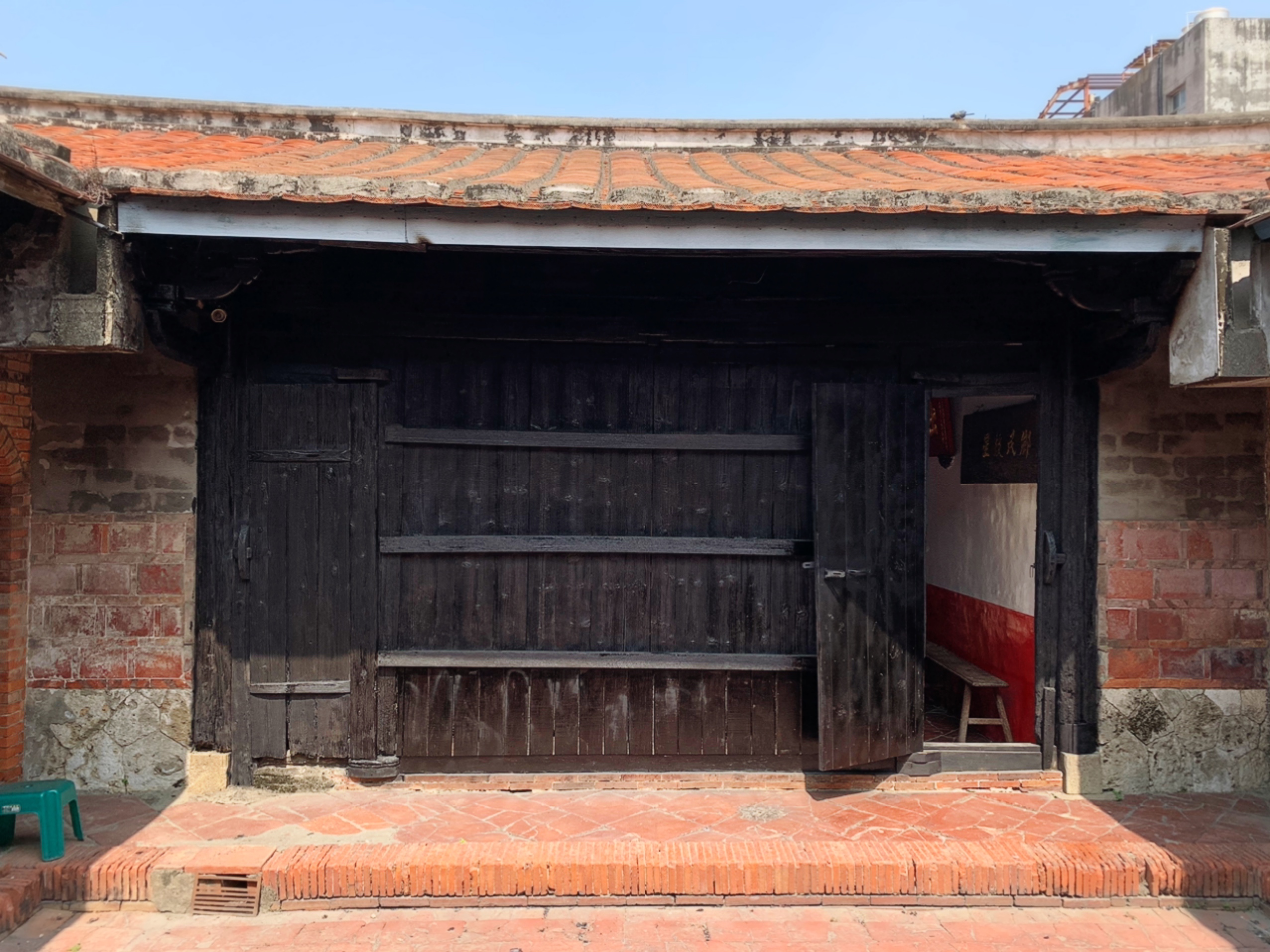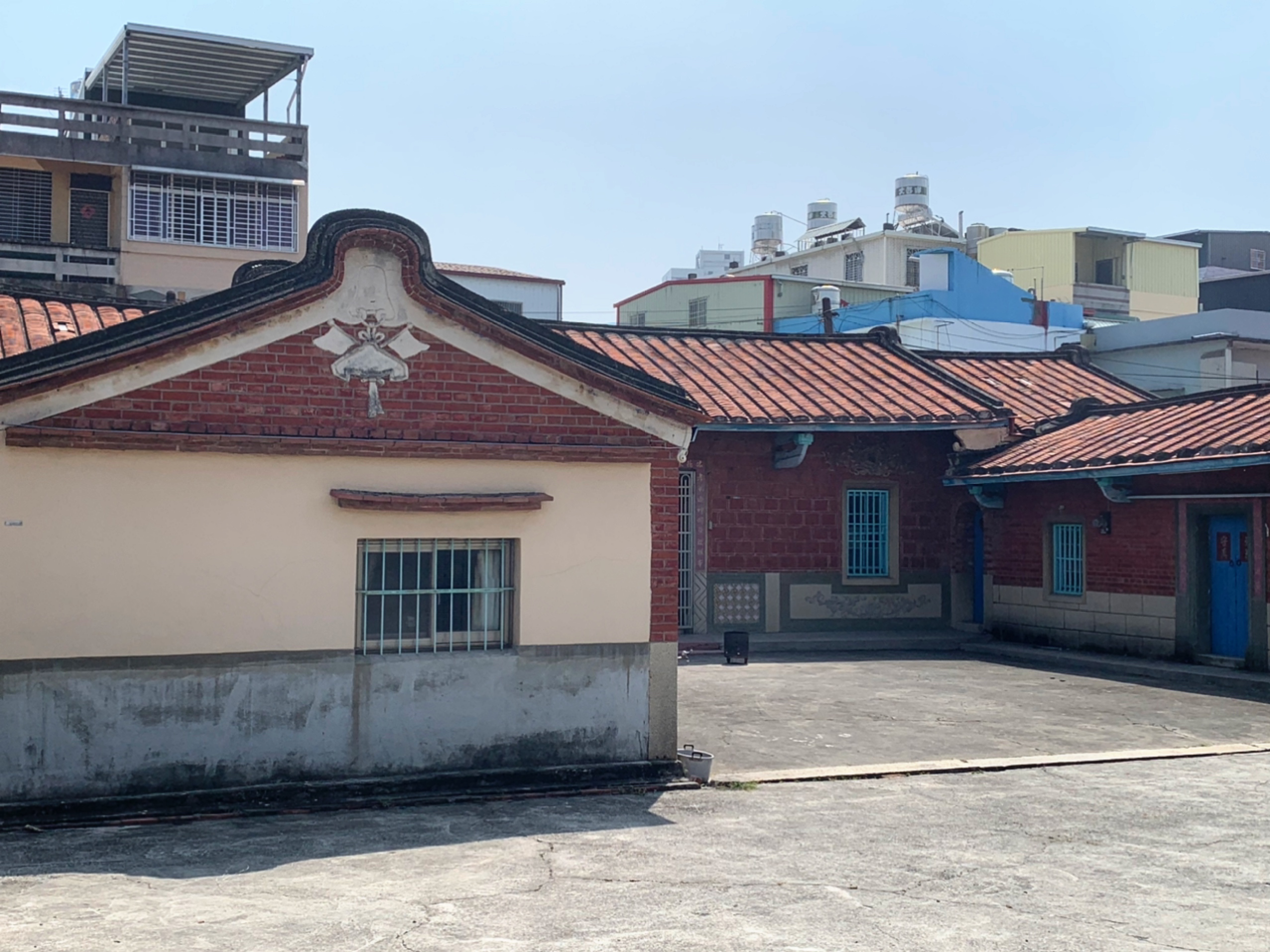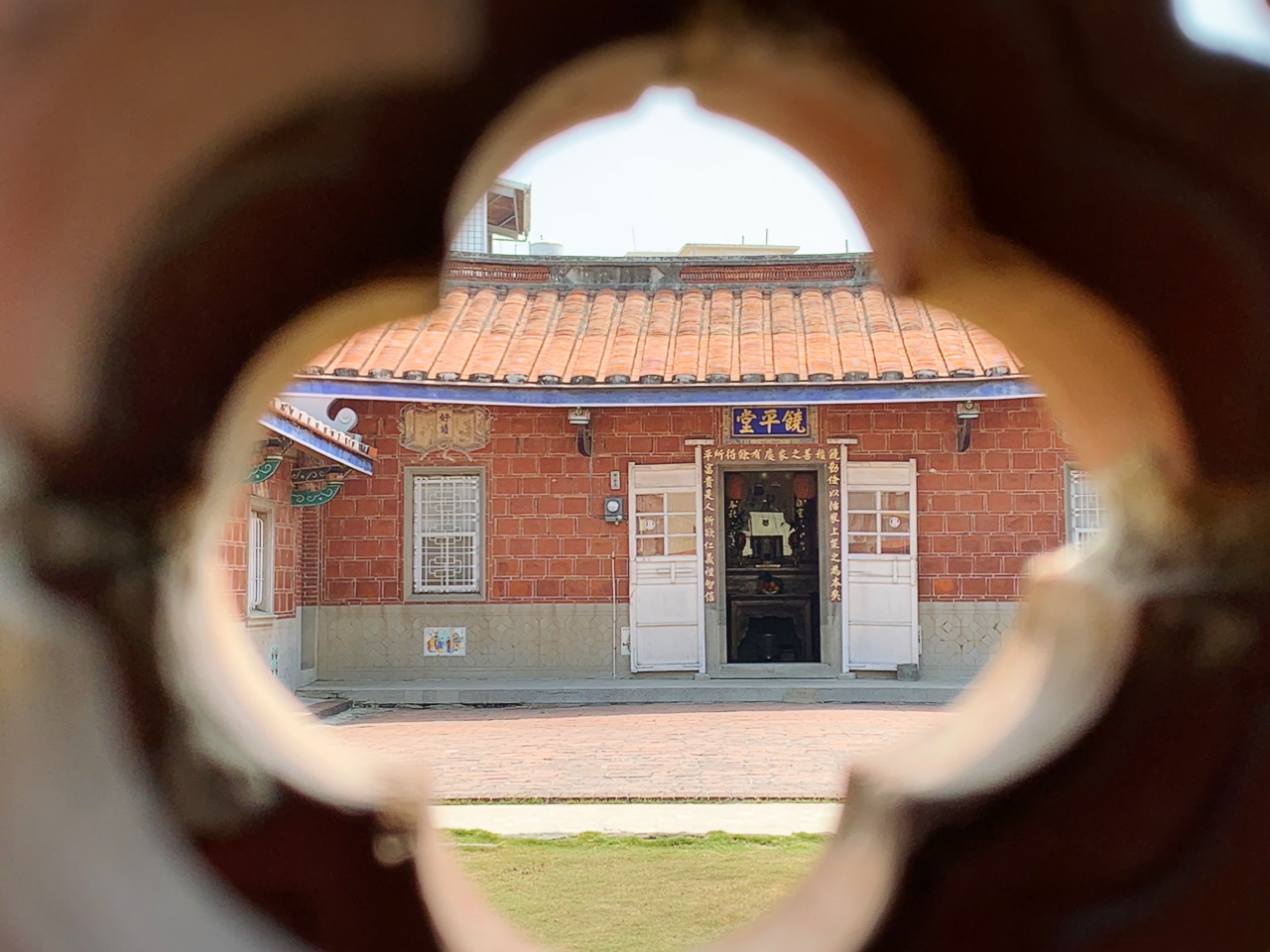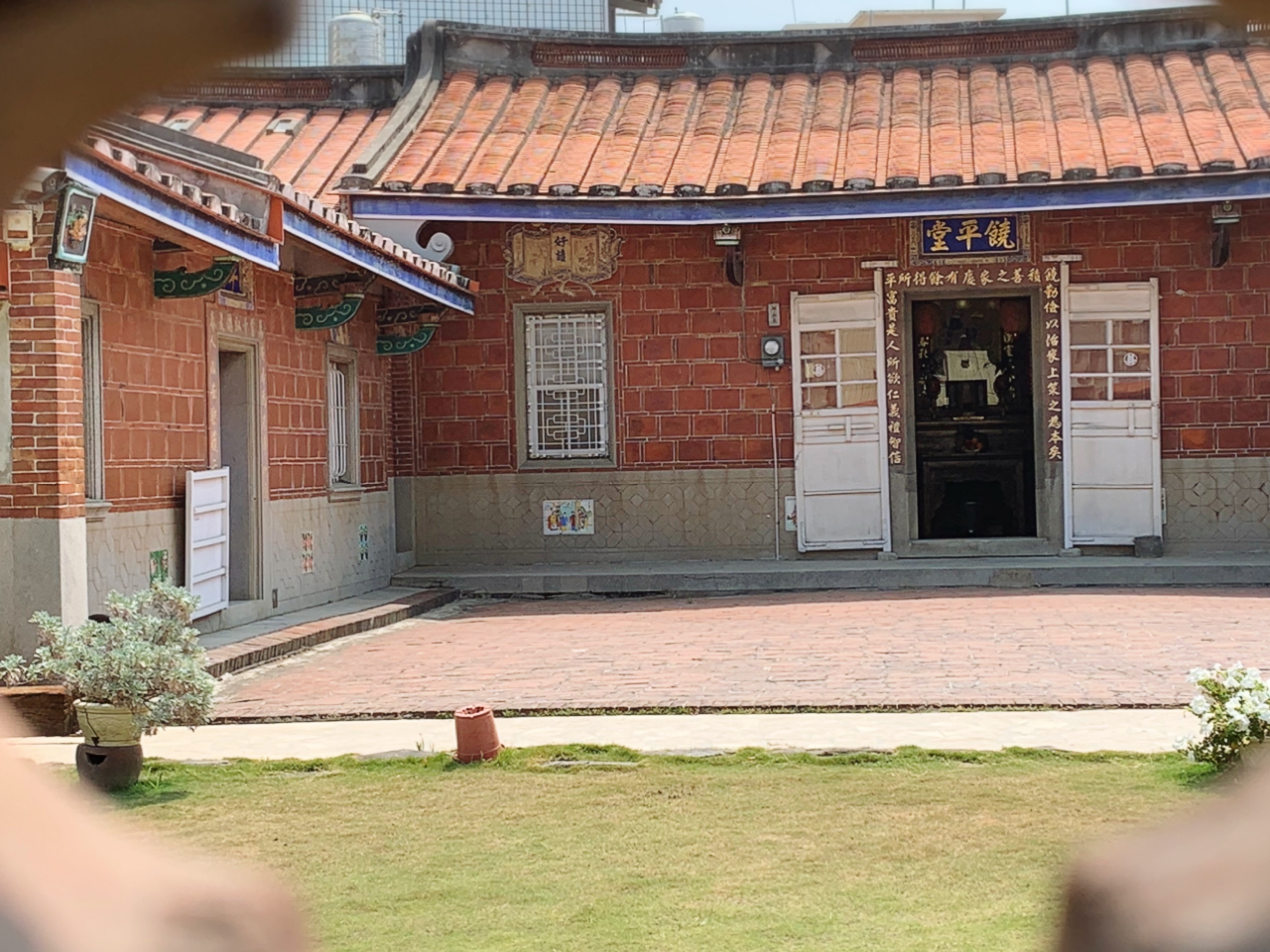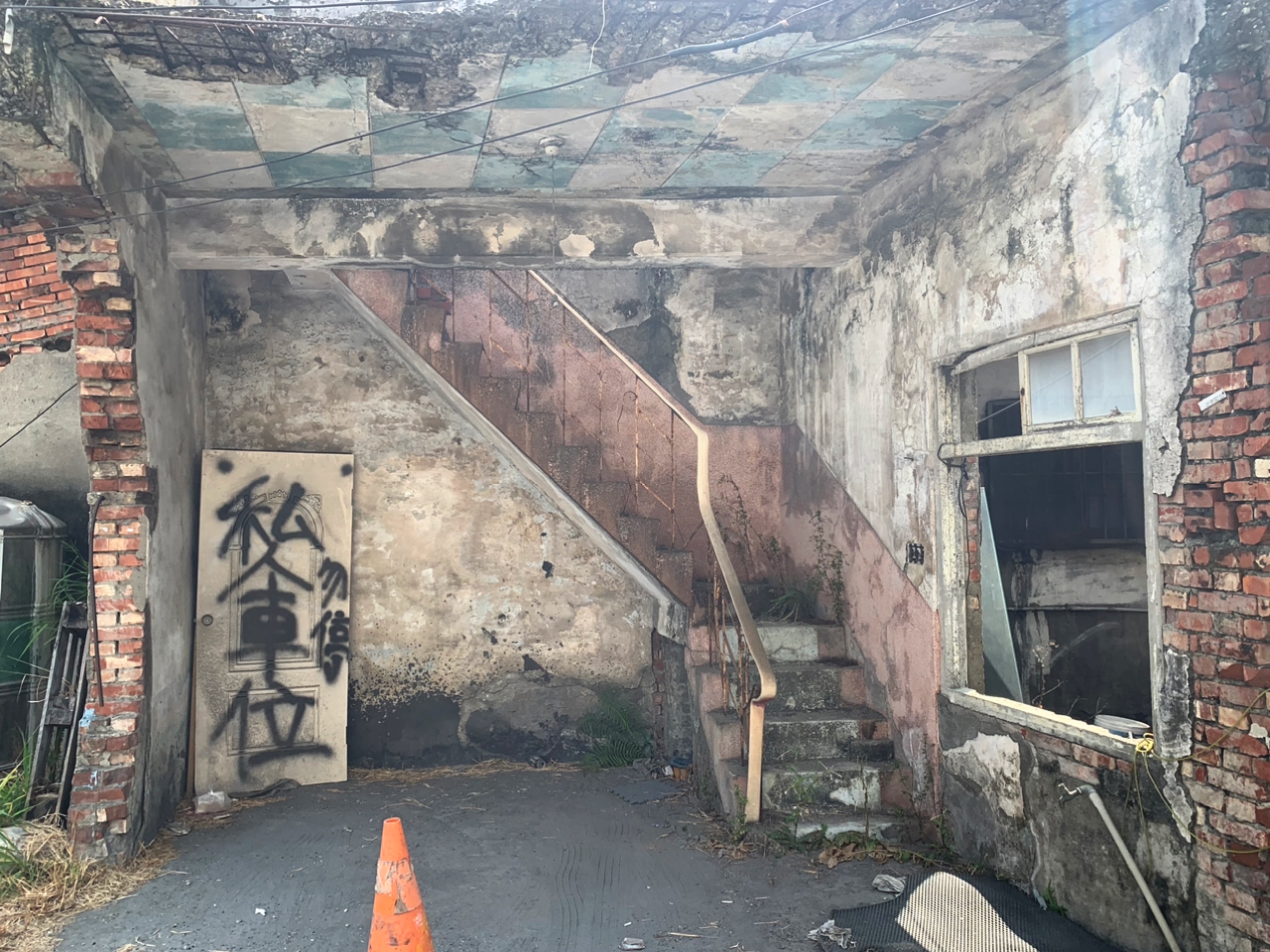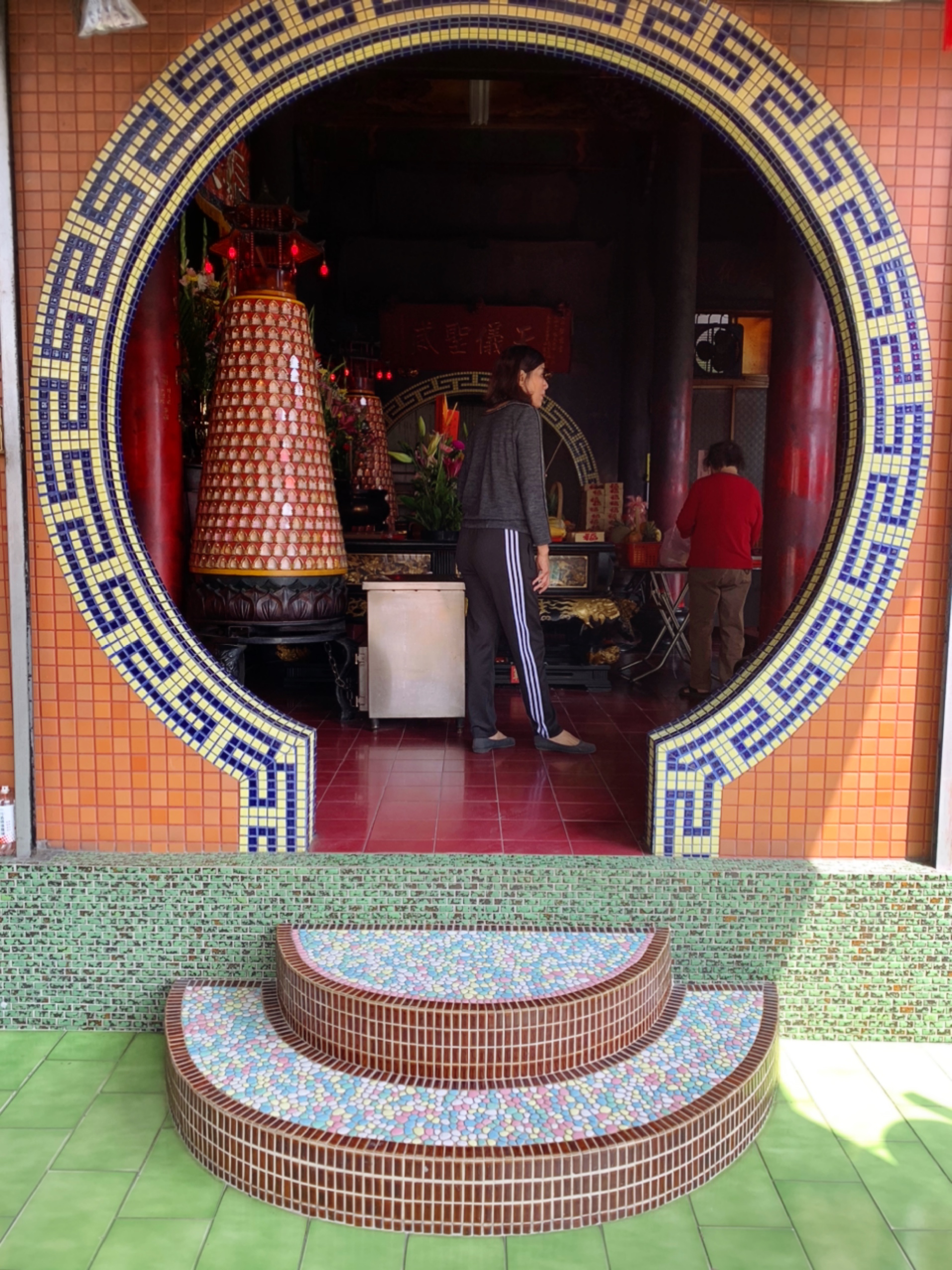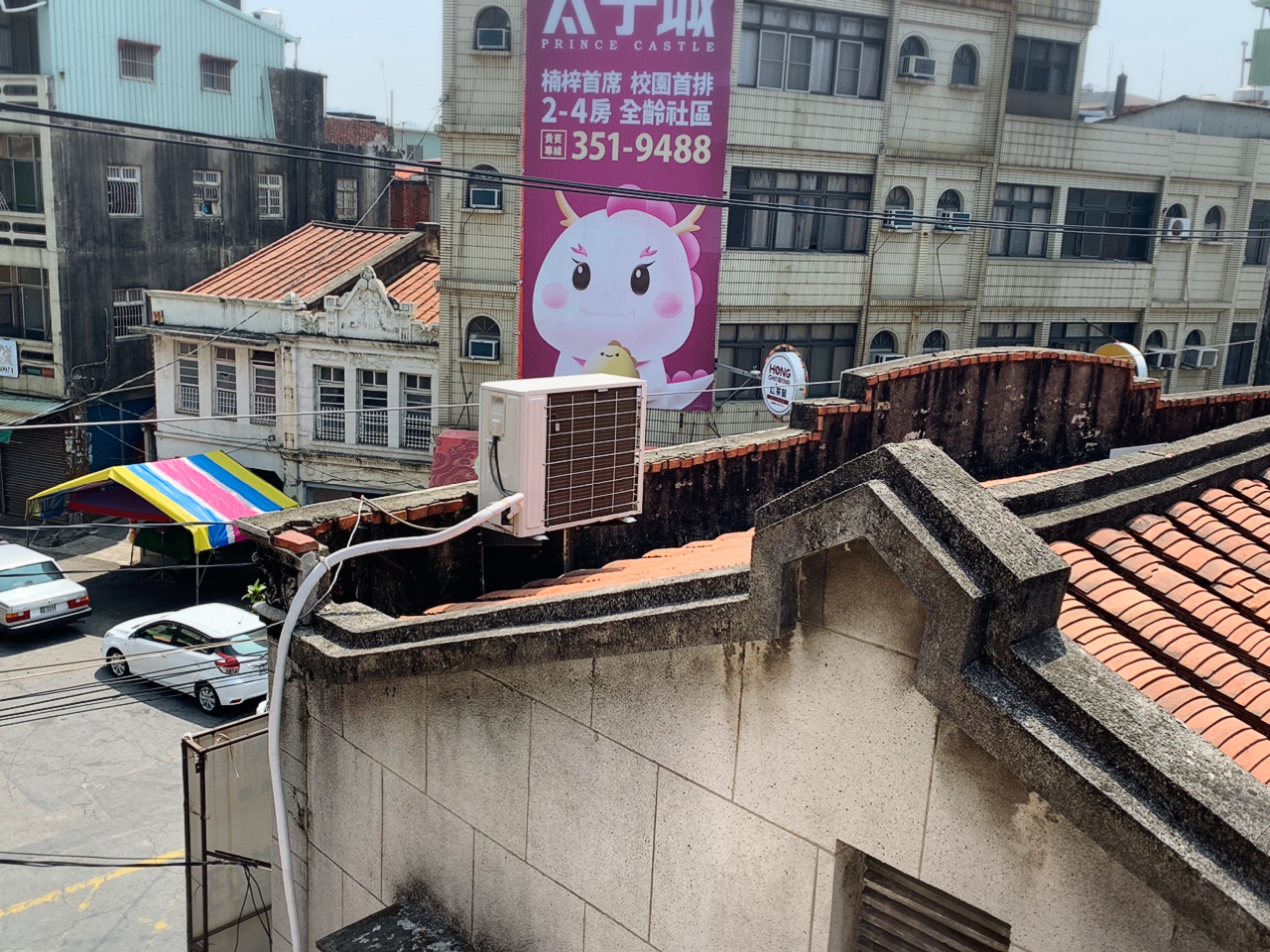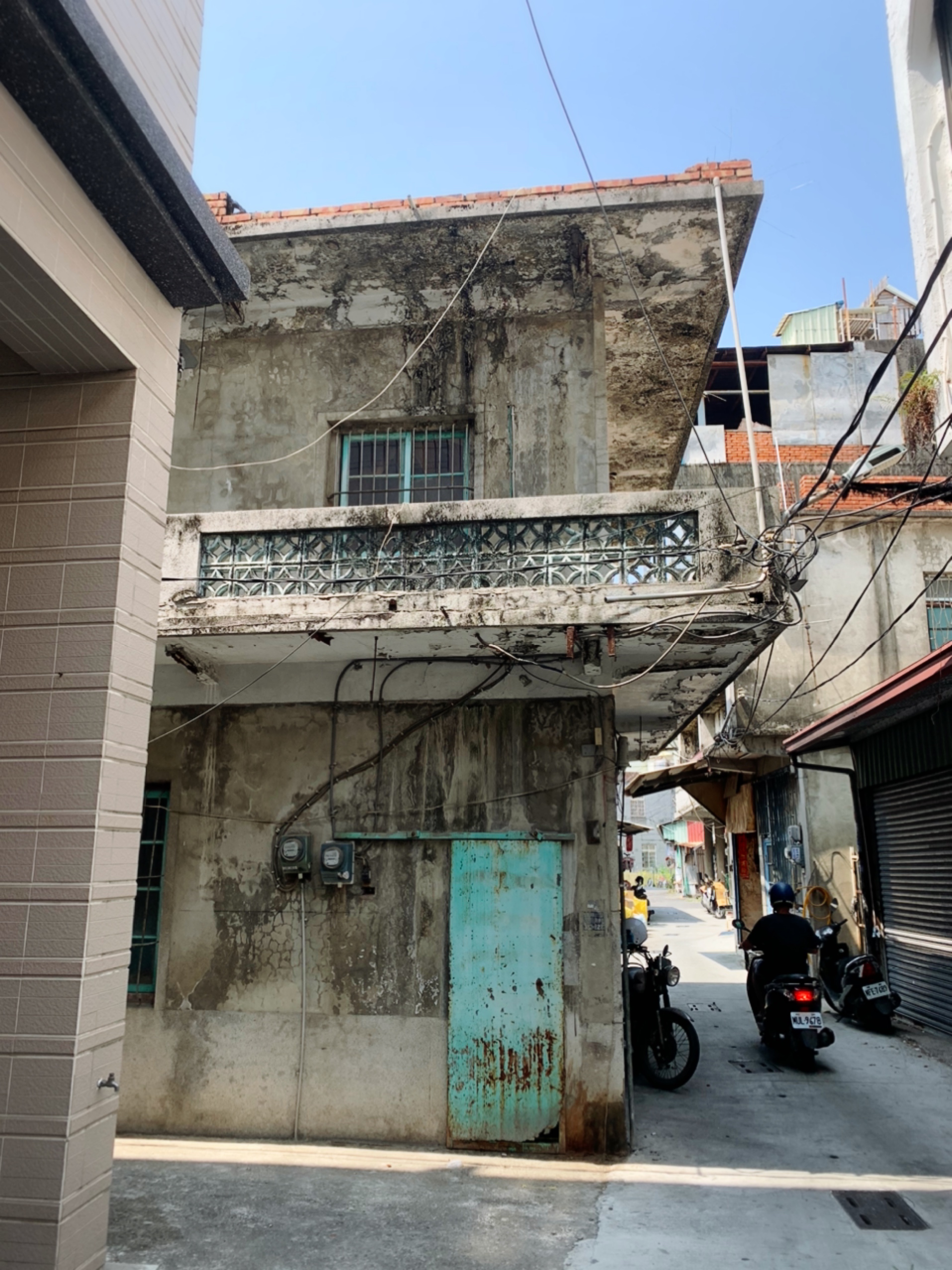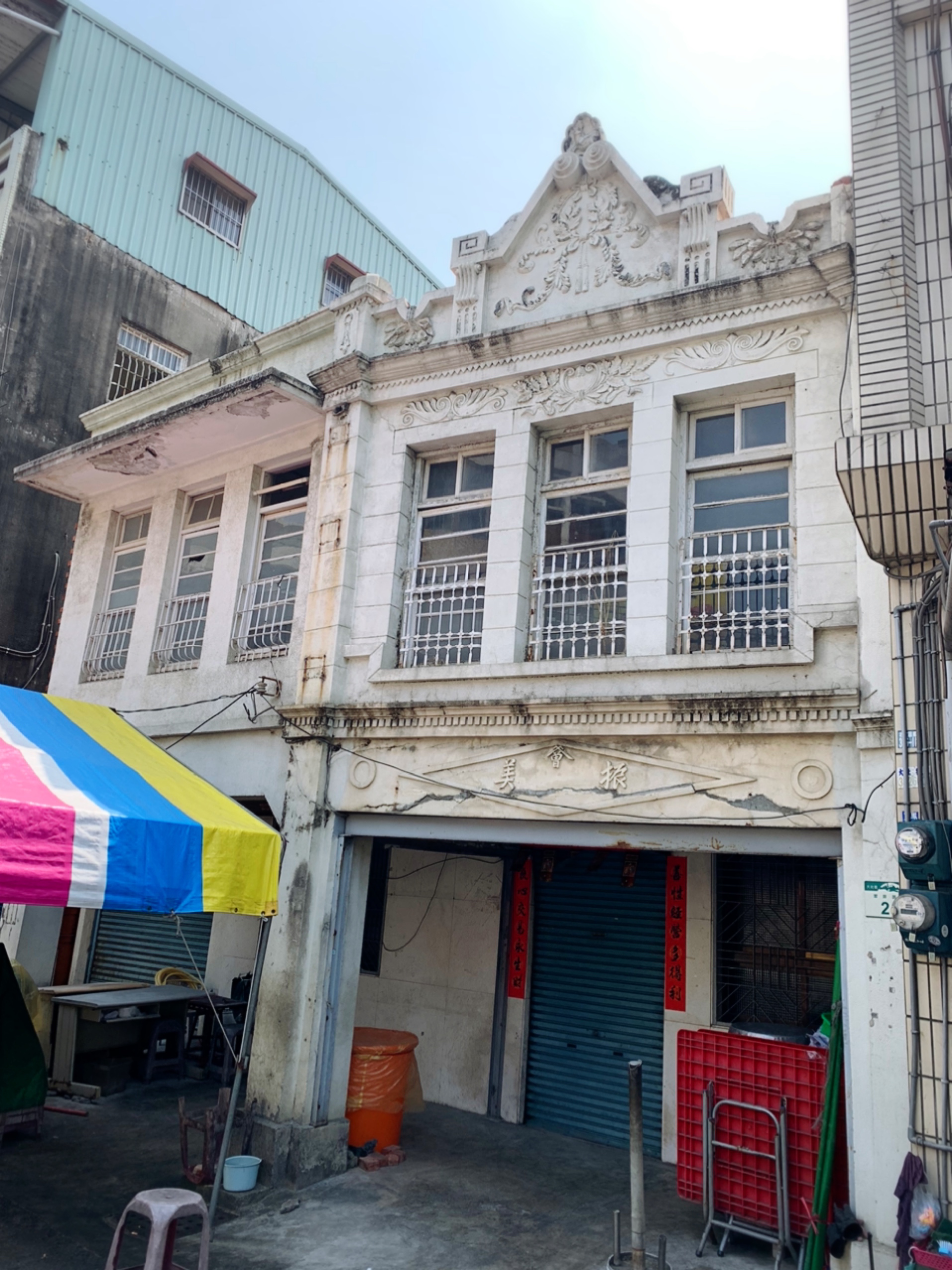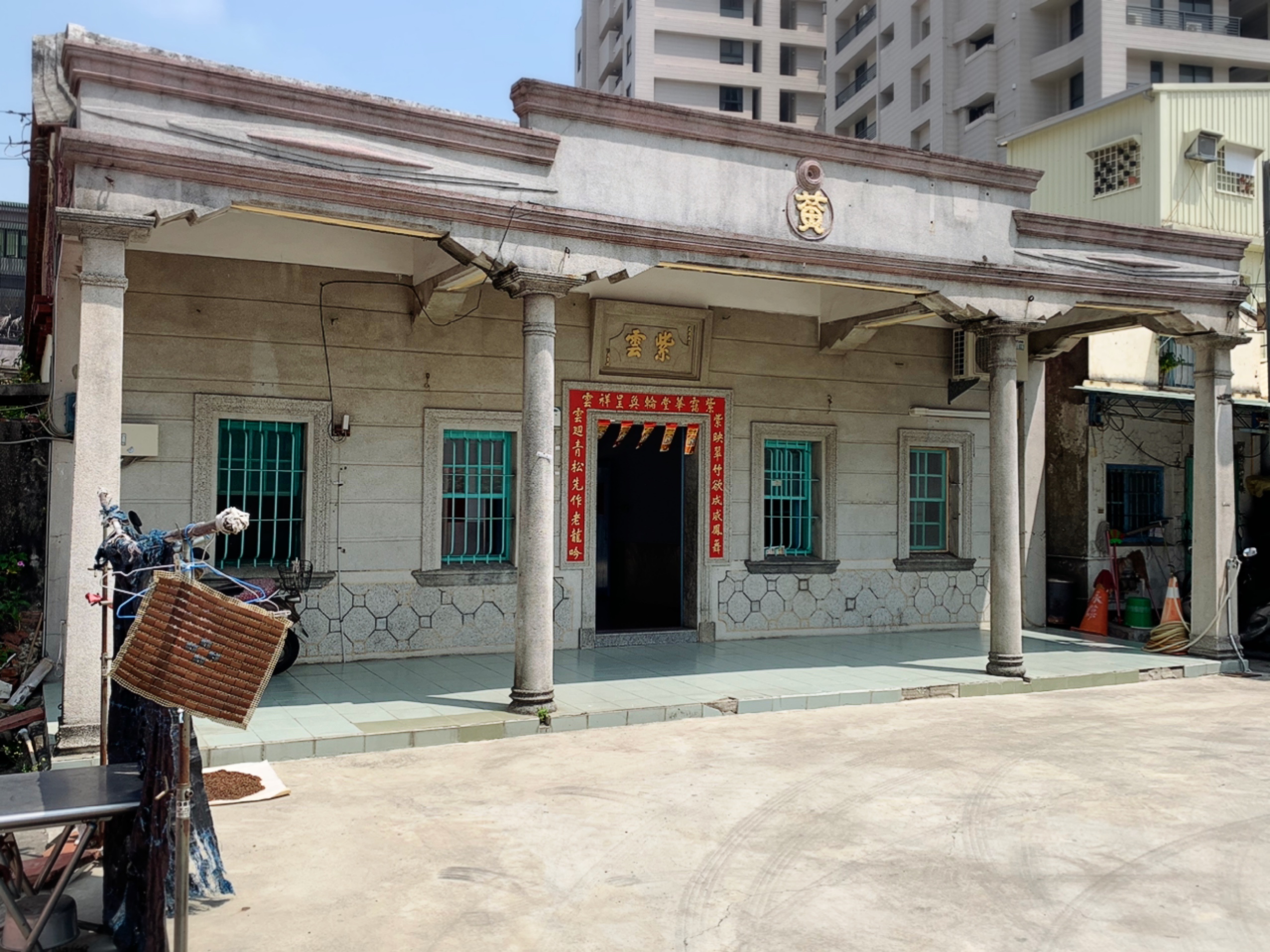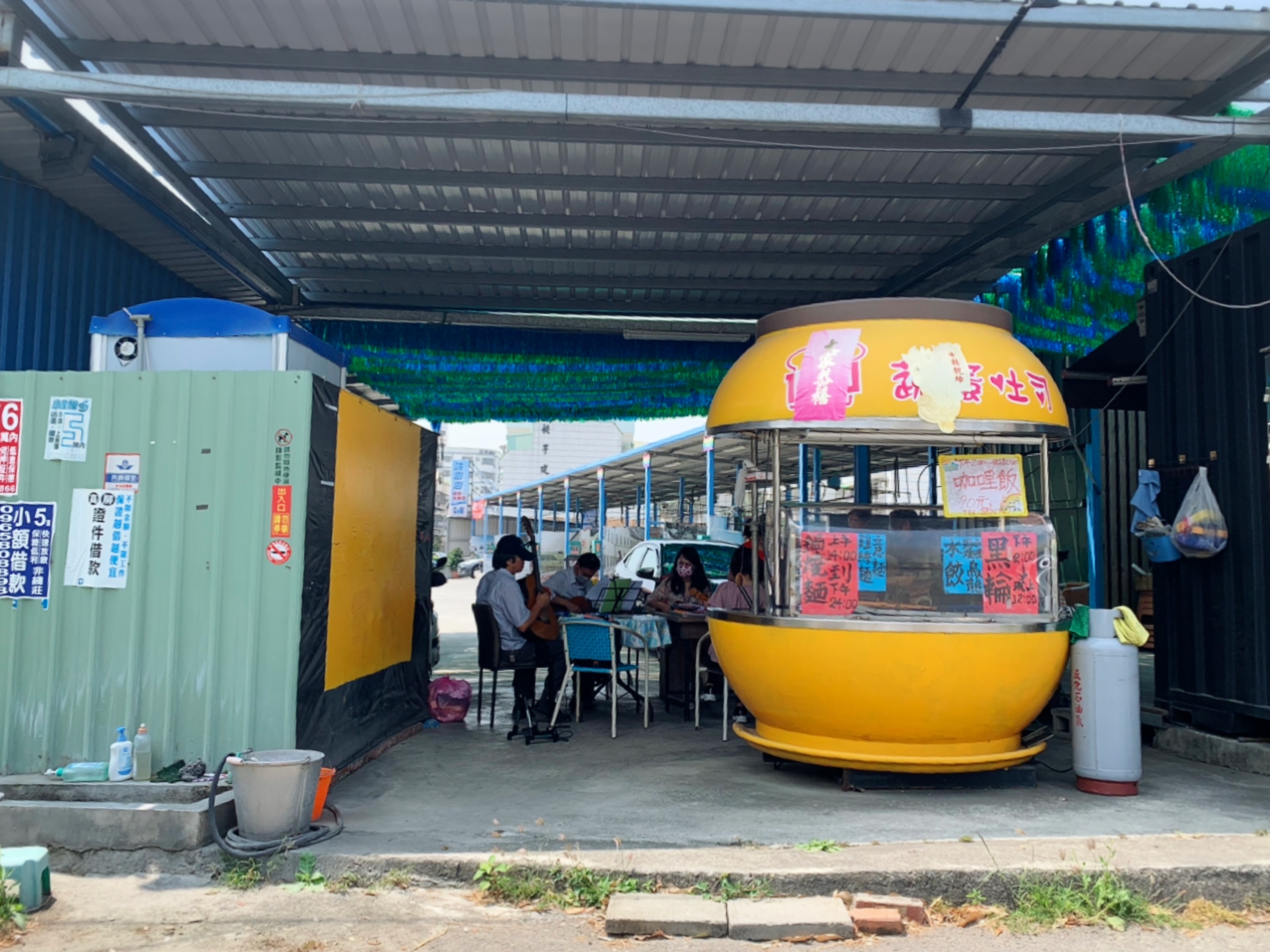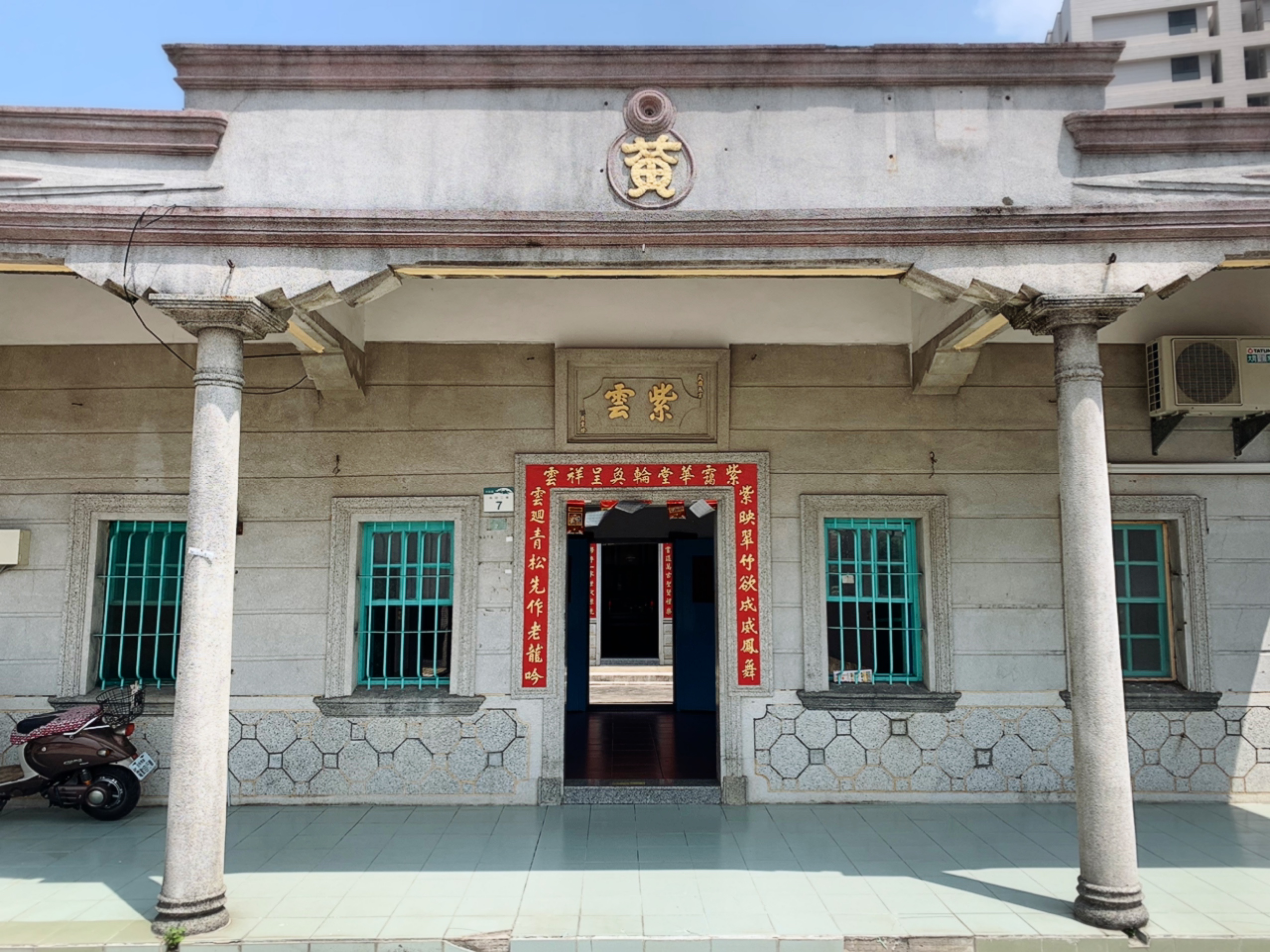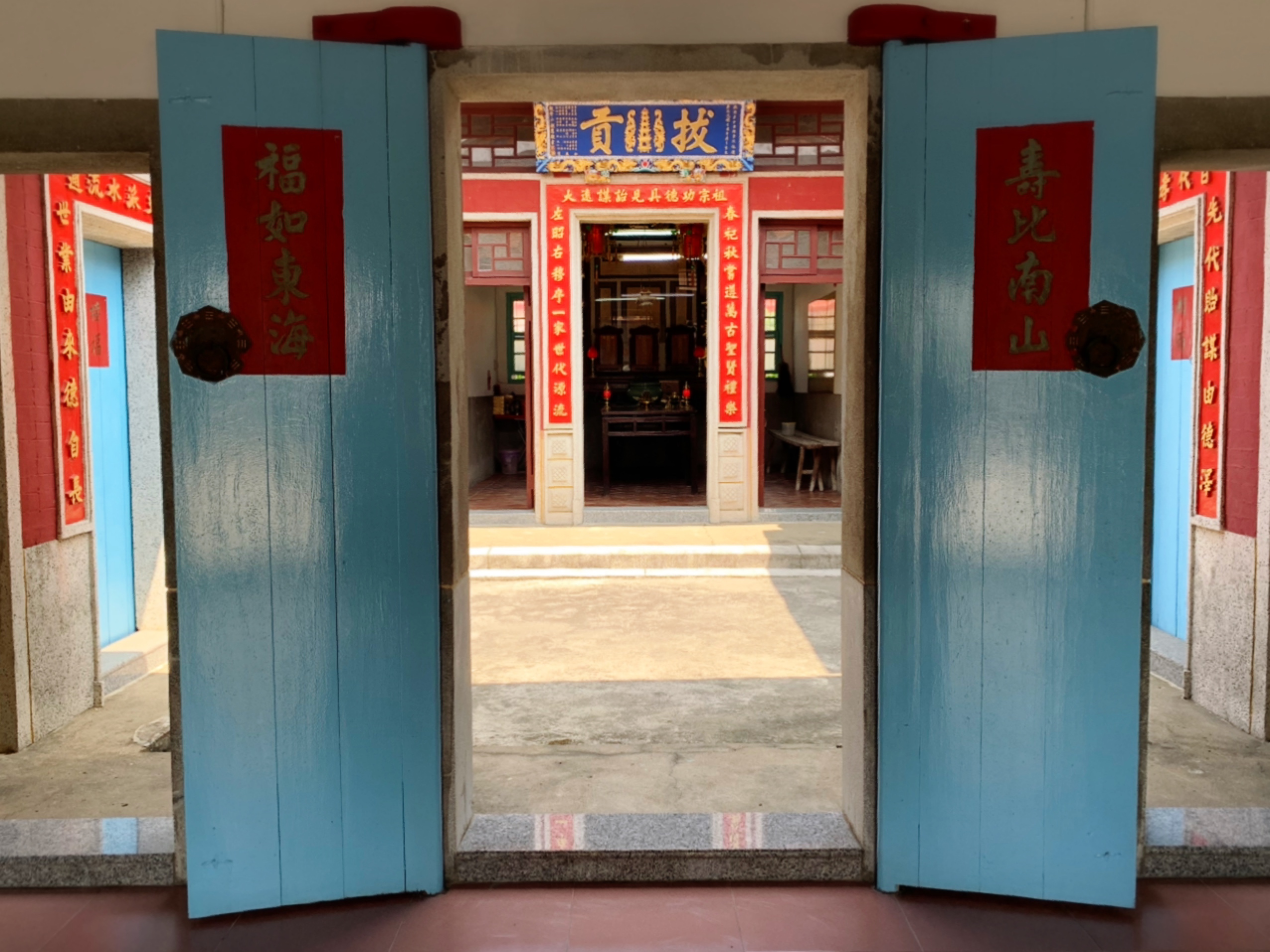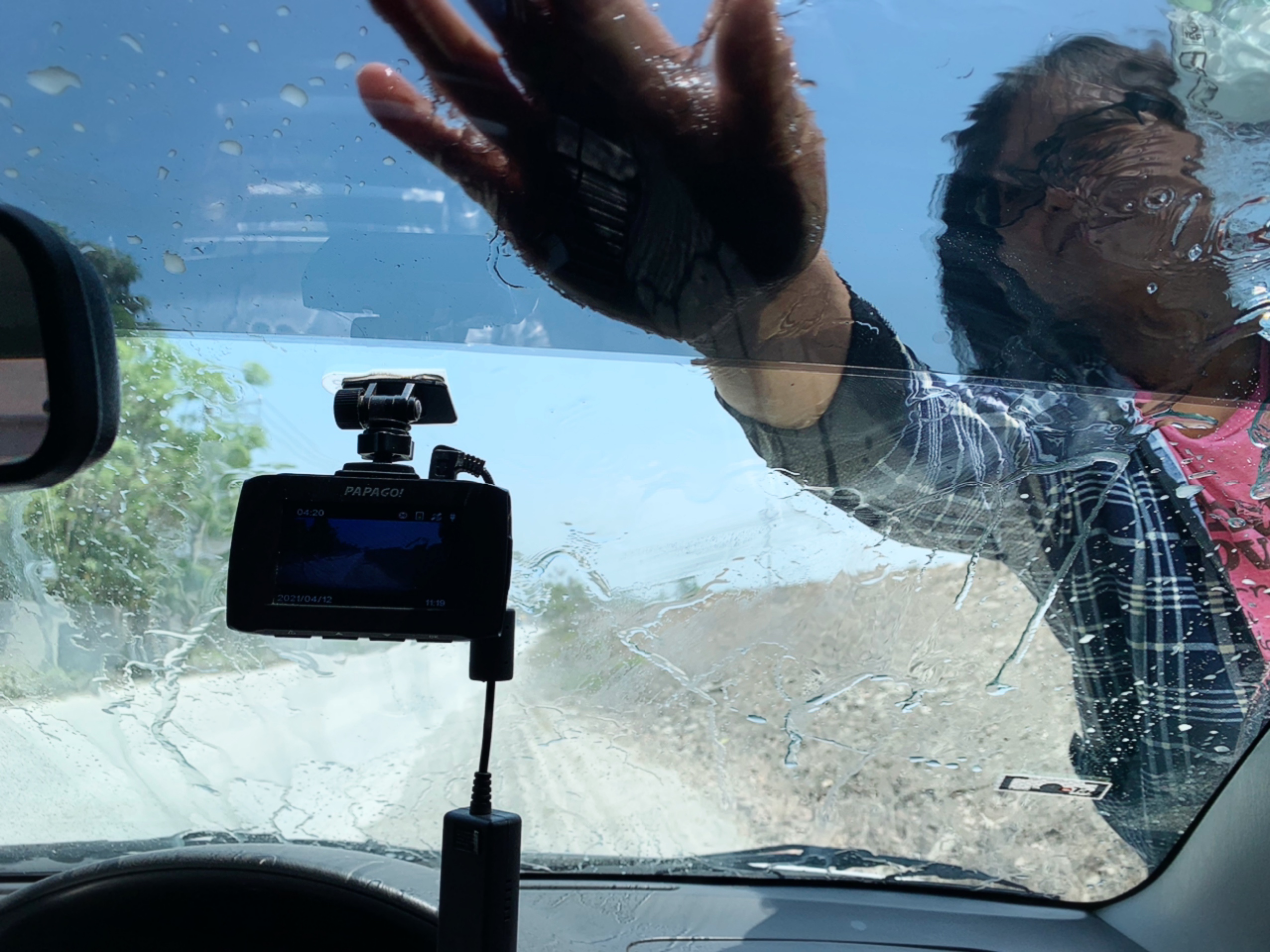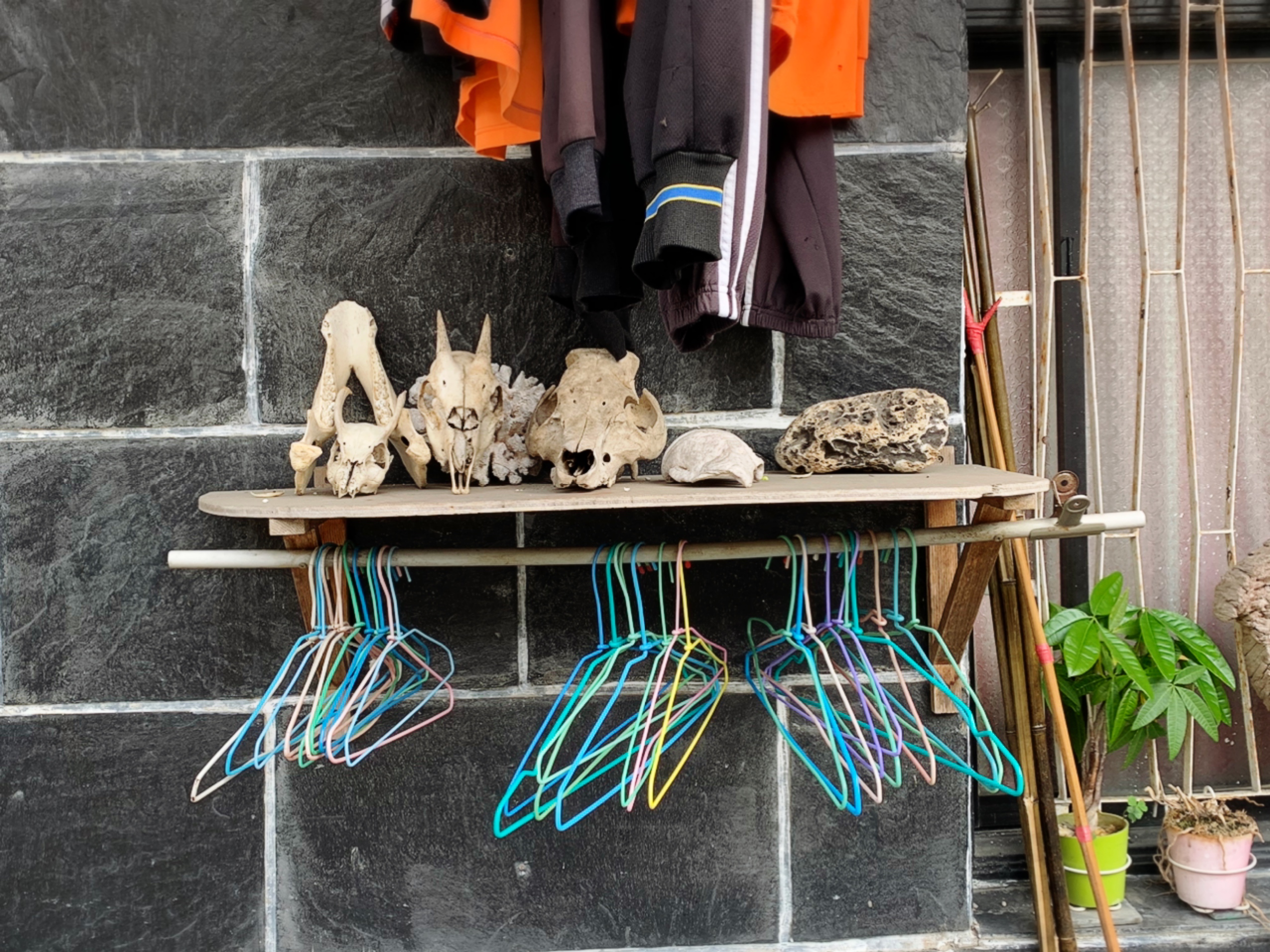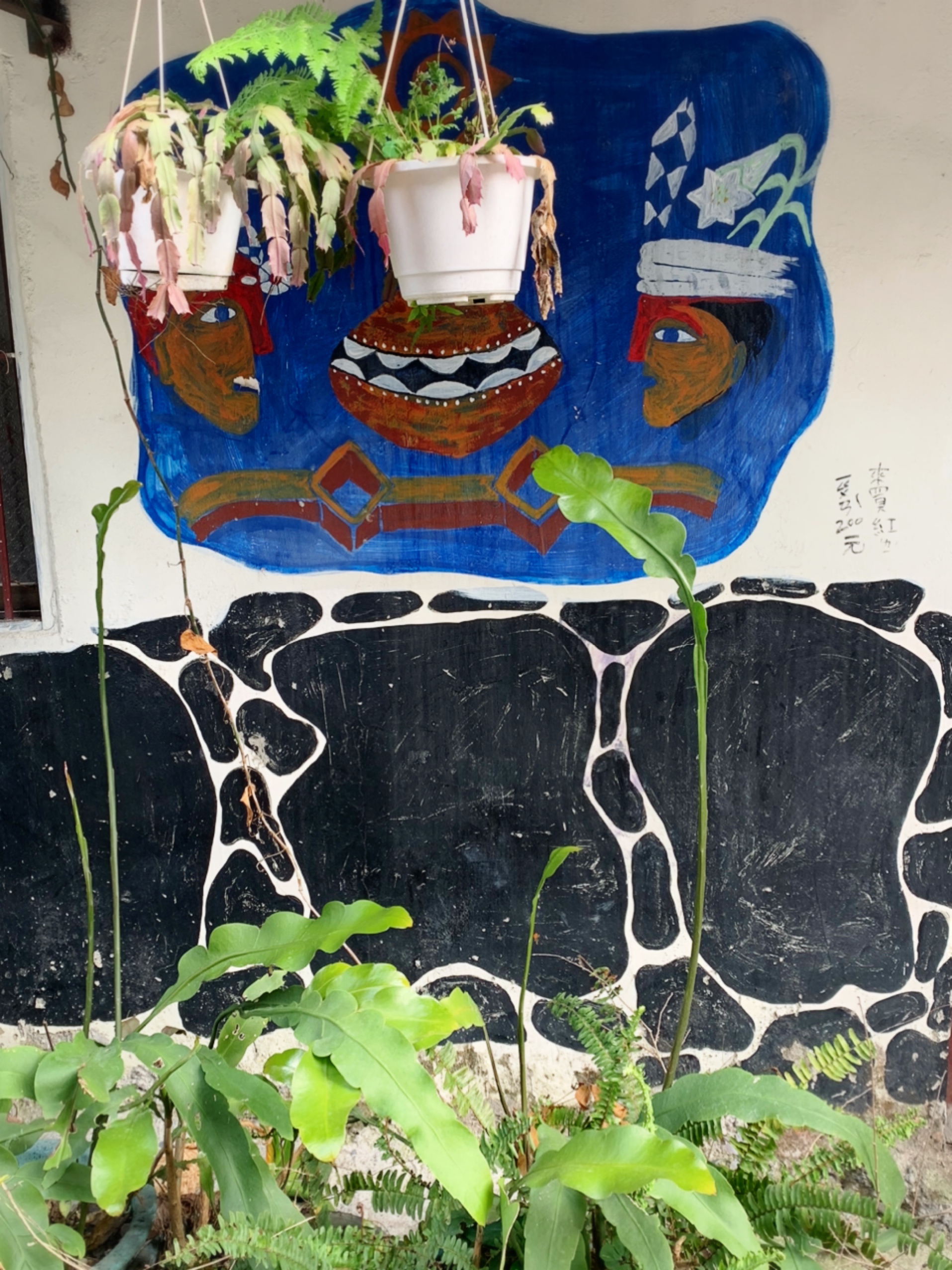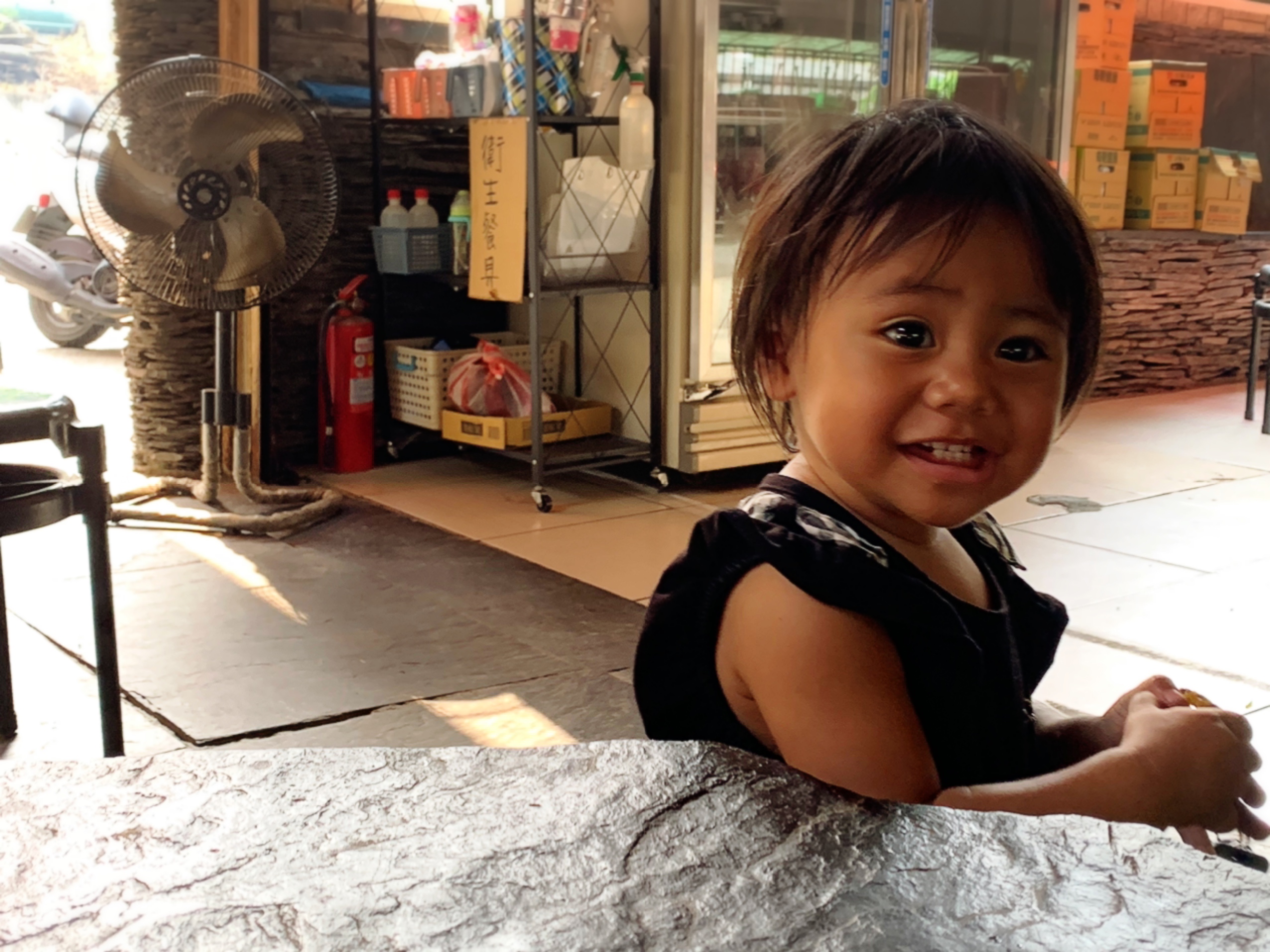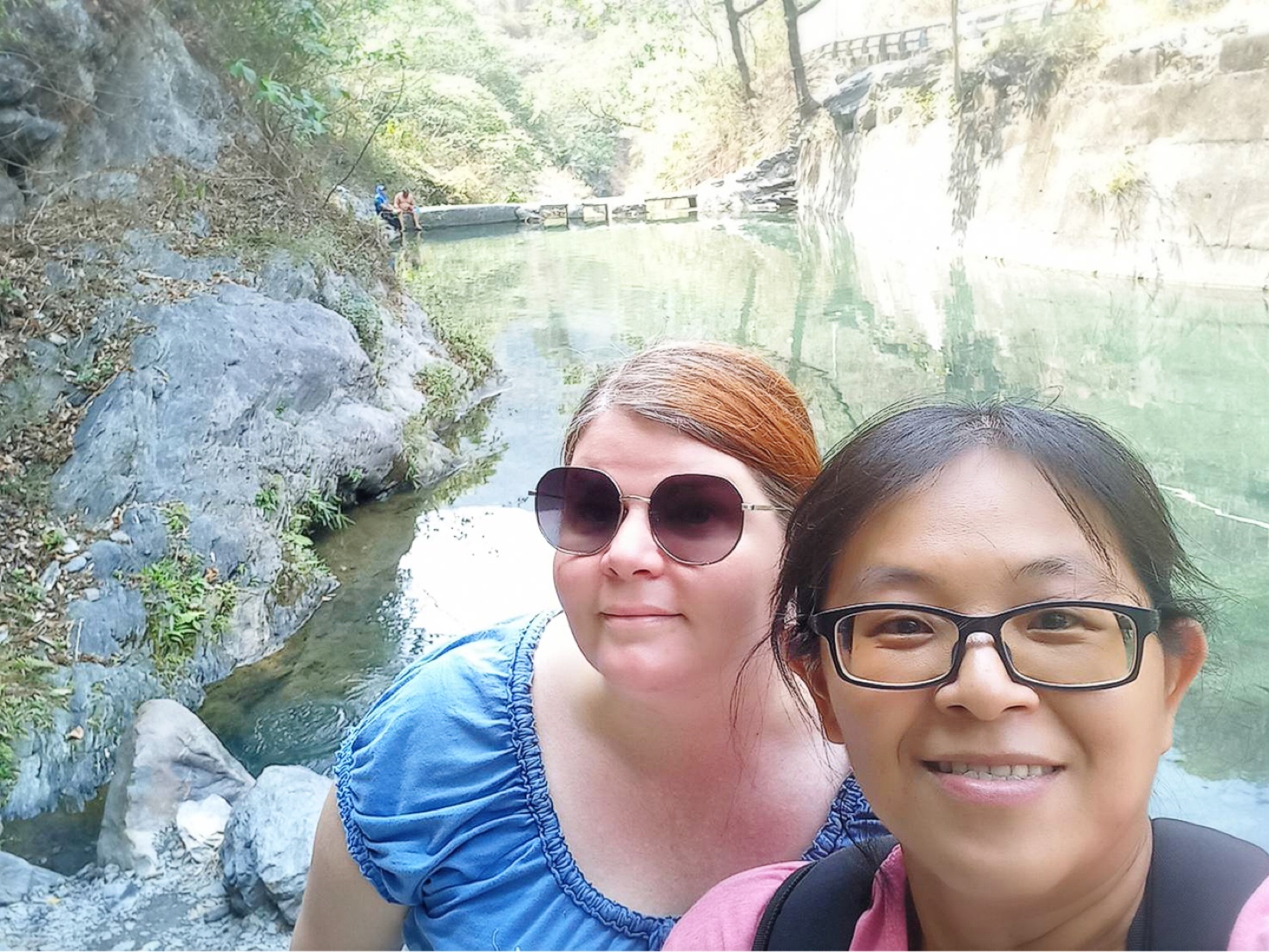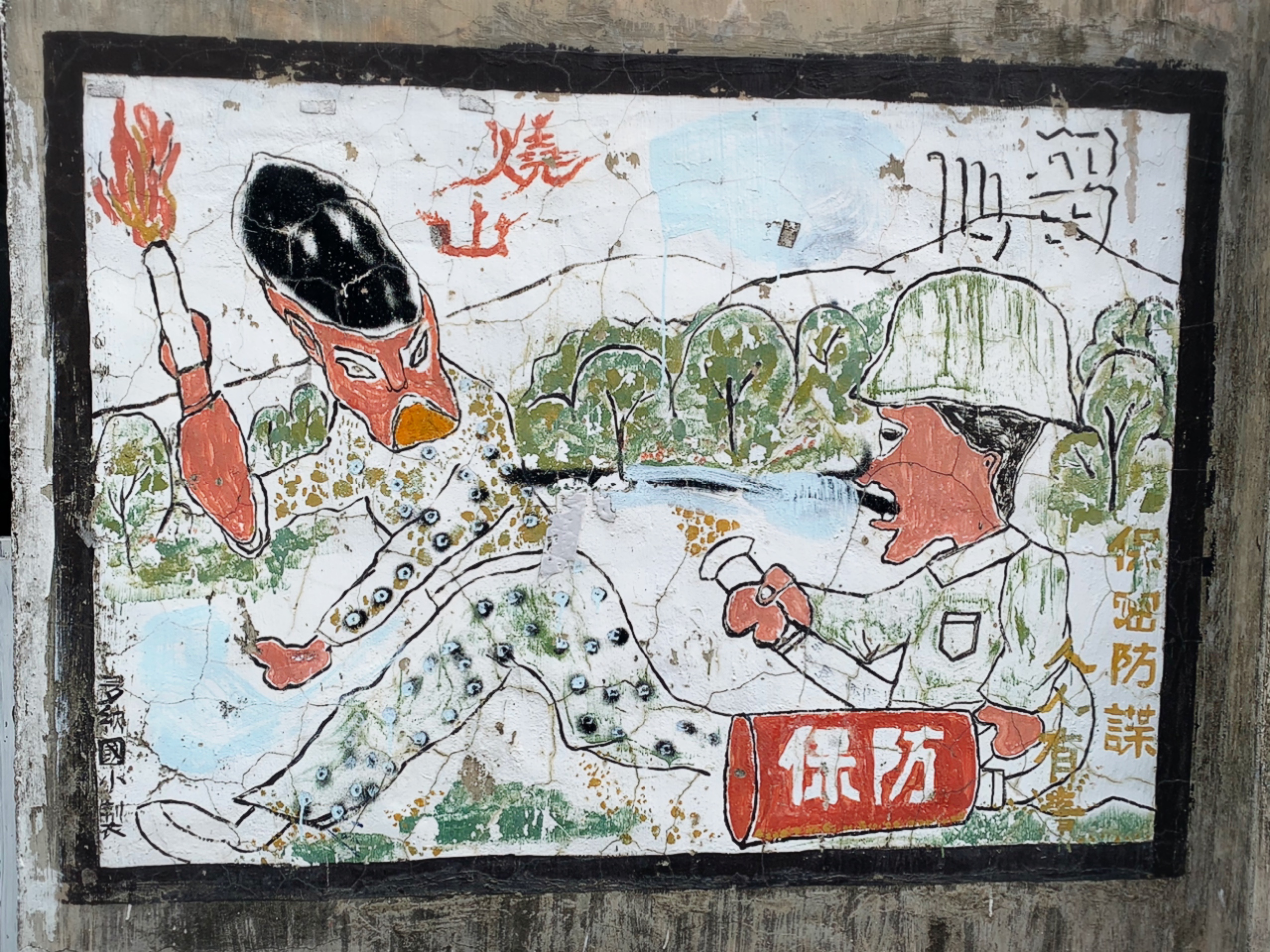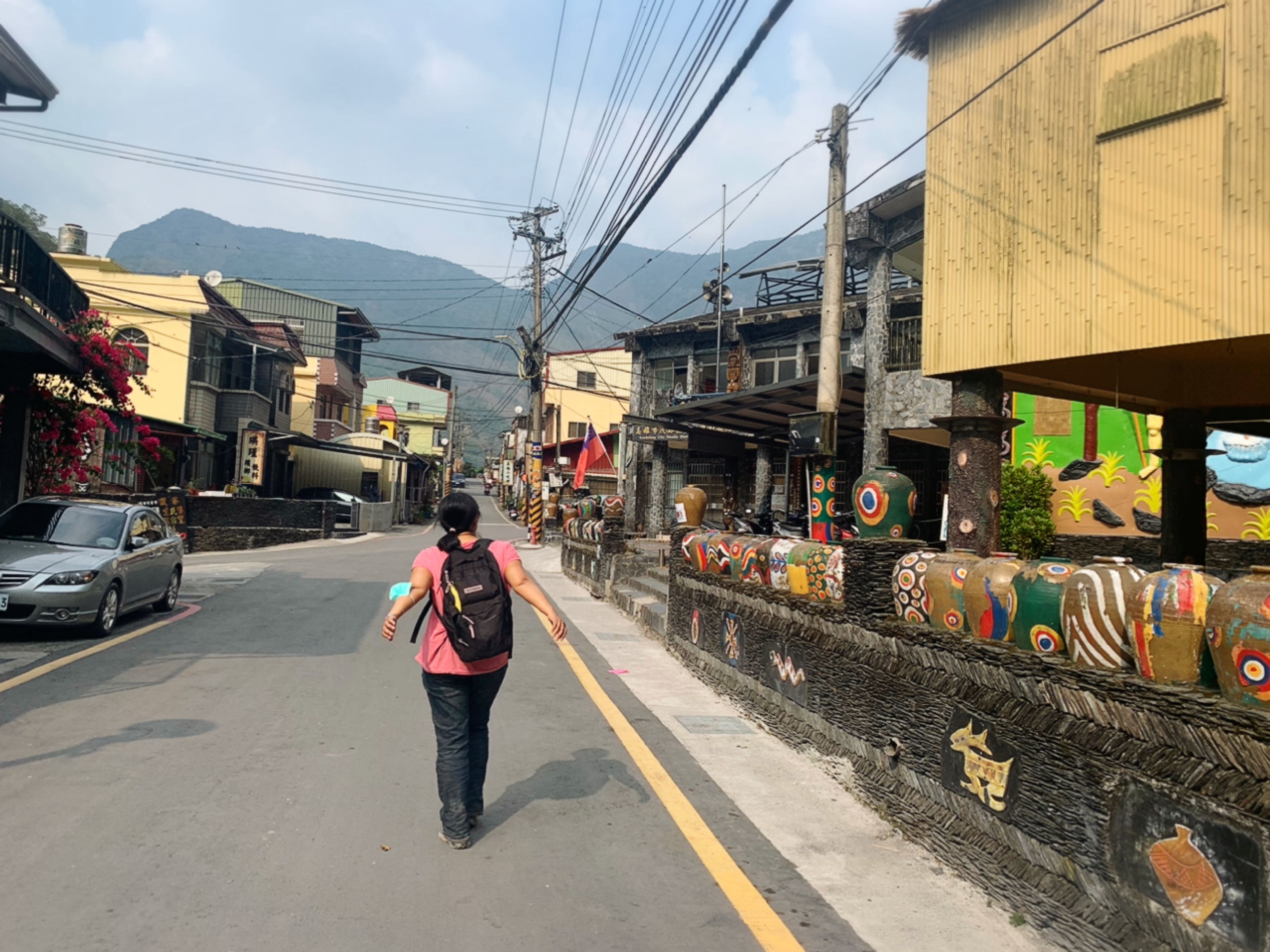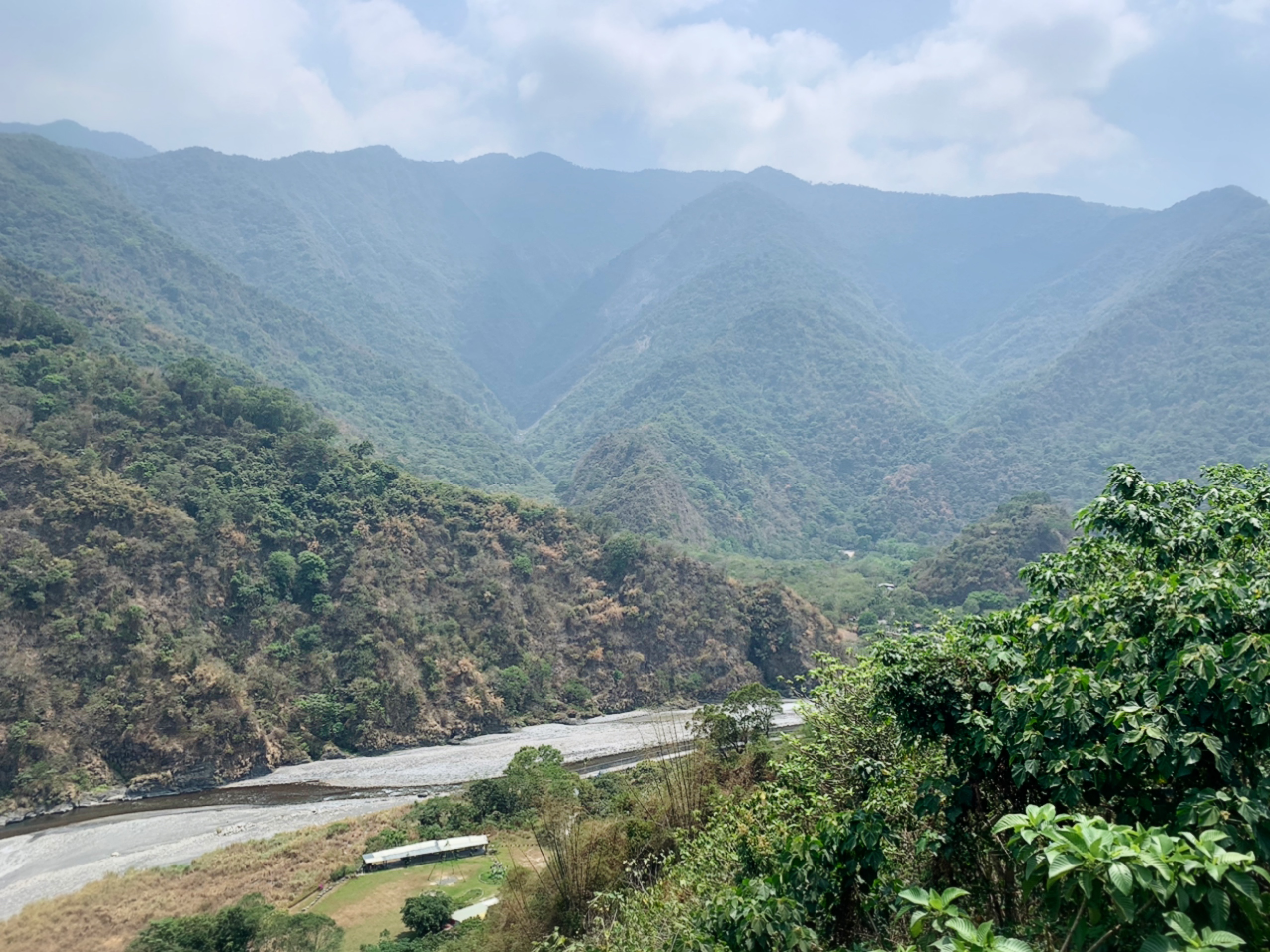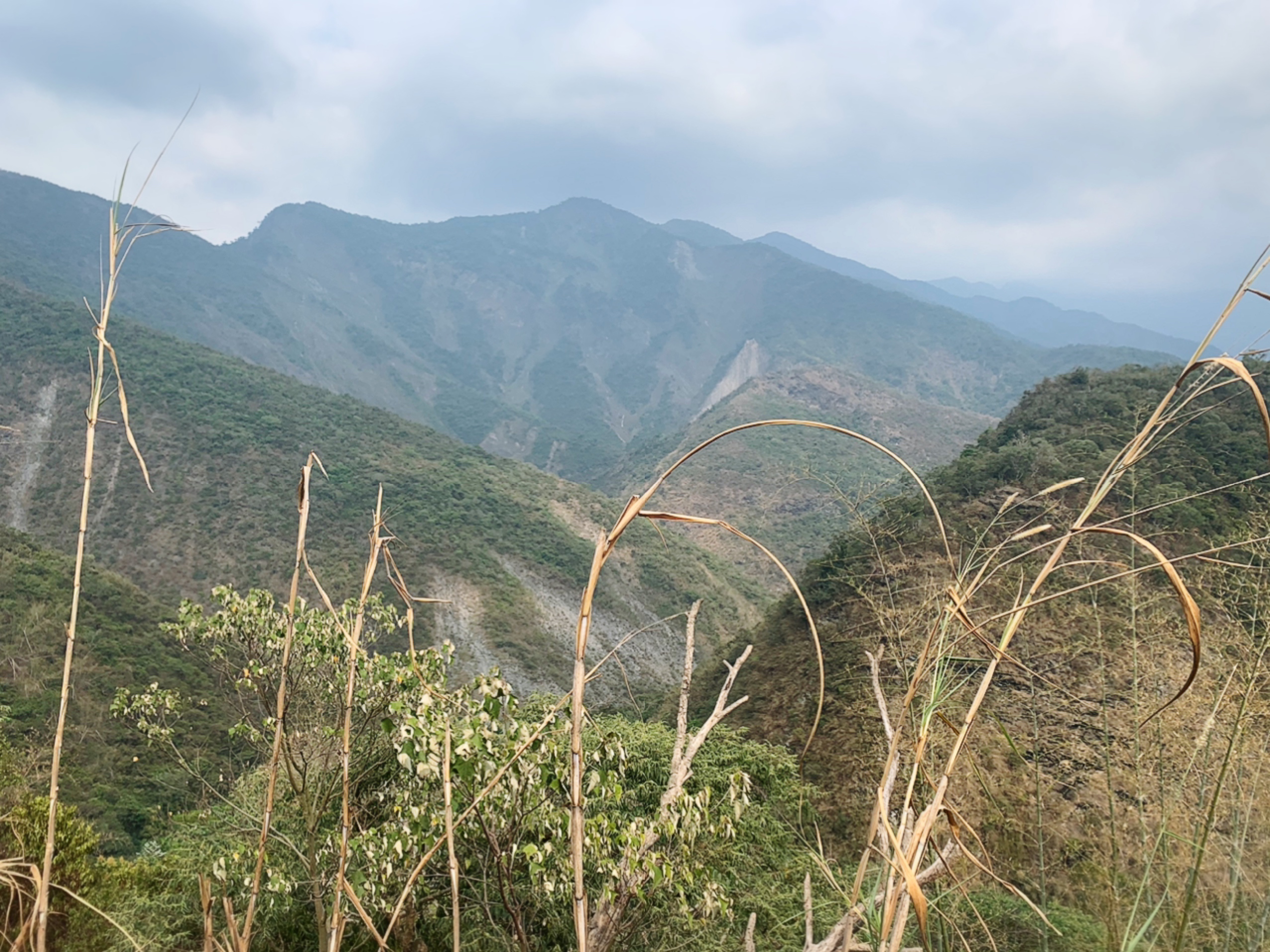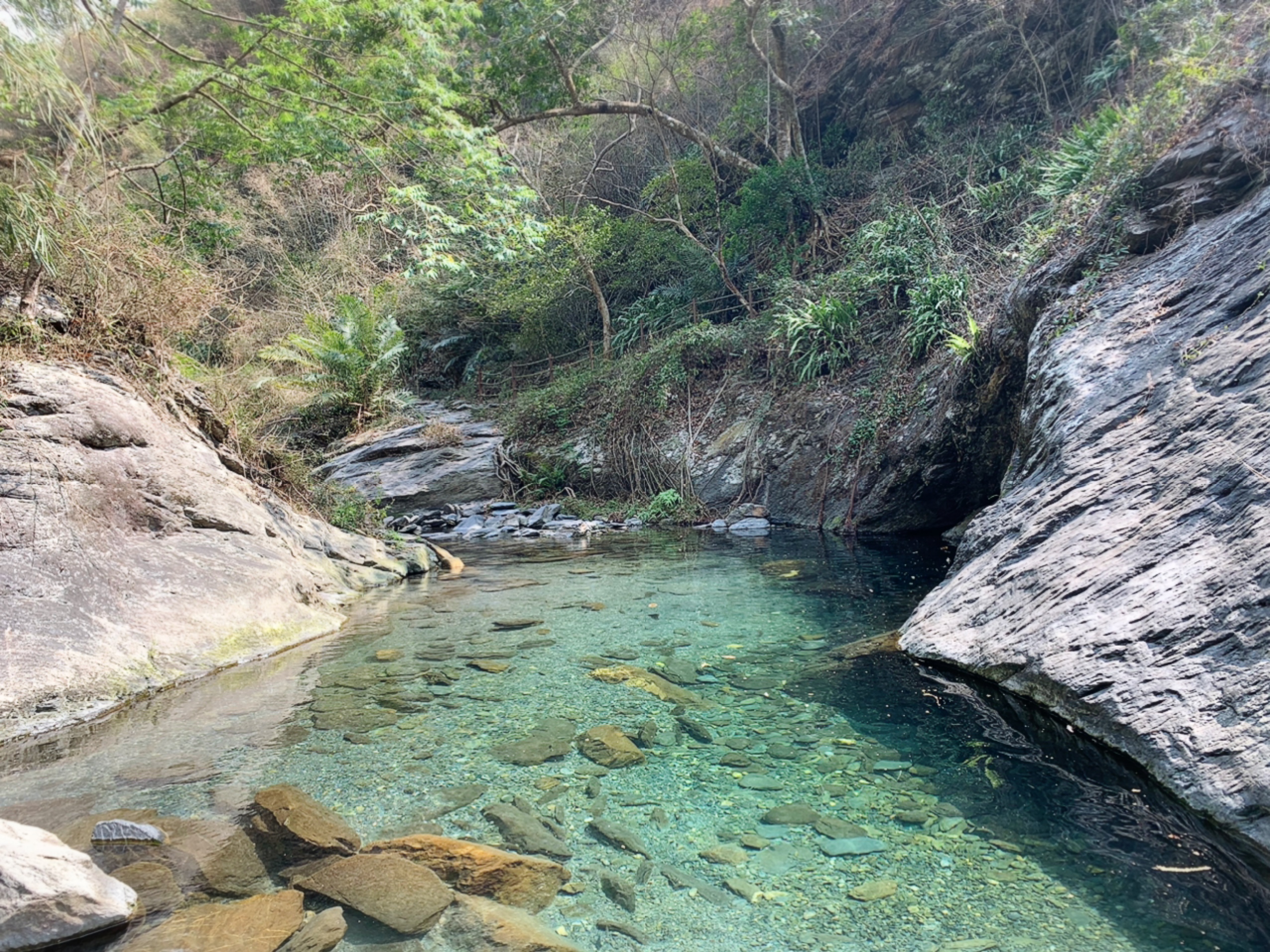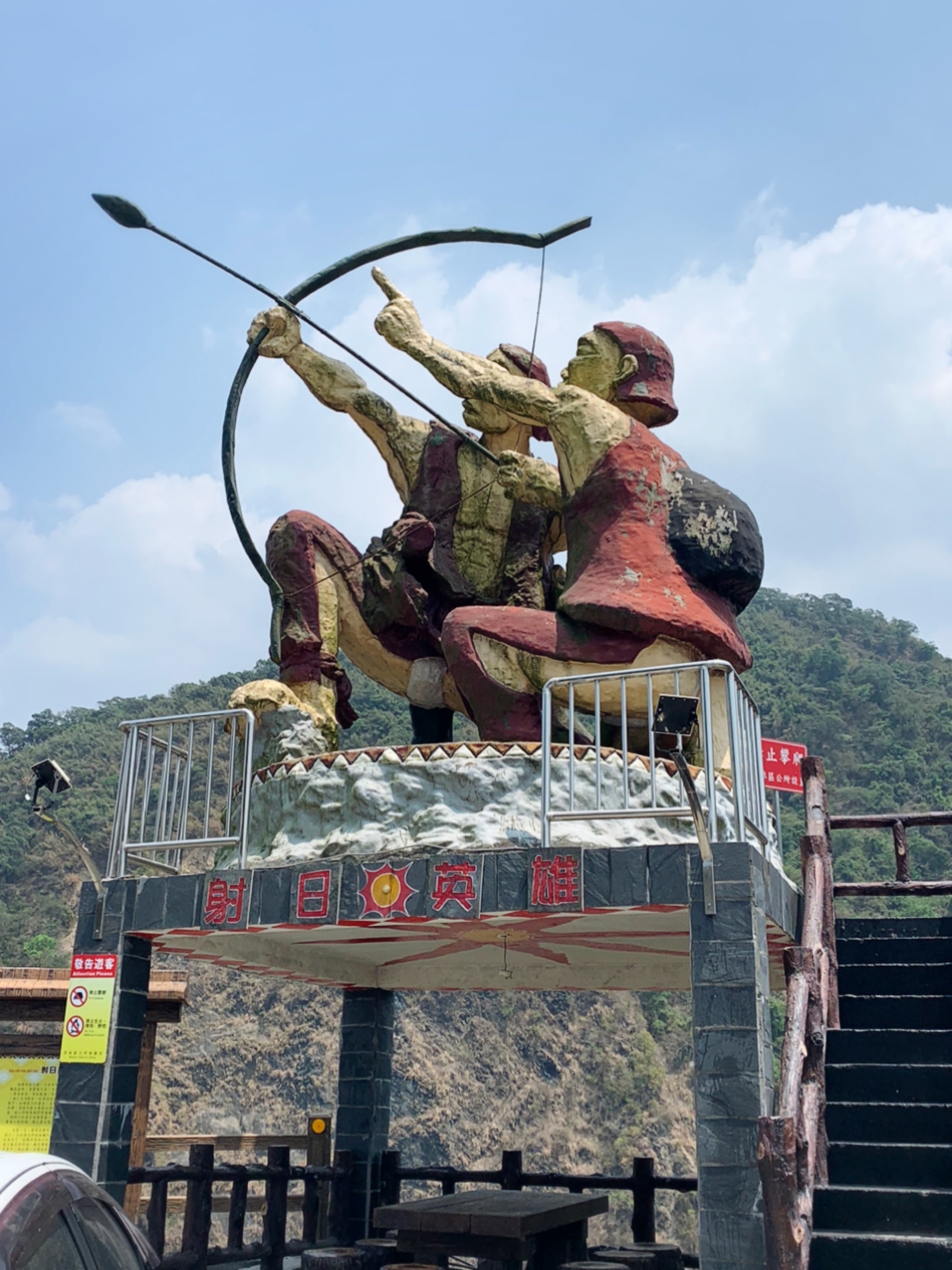
The interior of Tin Drum
Sometimes, I just don't feel like writing about politics, media or social issues -- I just want to talk about all the great things in Taiwan. (But if you want a bit of media fun, see if you can make it through this video -- I can't decide if the best part is Eric Chu acting like he actually thinks he's cool, or Wayne Chiang clearly knowing this is cringe-tastic but going along with it).
This is one of those times. I'm just not feelin' it news-wise, so let's talk culture. I've offered rundowns of my favorite Taipei cafes before, but a combination of work and personal travel has taken me south a lot this year. For this reason, despite not living in Tainan, I've been able to put together a list of Tainan cafes I like, most of which are not on, say, the Tripadvisor algorithm-generated list (though some of those, such as Zhengxing Cafe and Lure, also look quite good. Others I wonder about. A branch of Louisa? Louisa is fine, but hardly unique.)
If you live in Tainan, I doubt my choices will surprise you. If you don't, maybe you'll get a few new ideas for where to hang out! These aren't ranked in any particular order, so where they appear on the list isn't a reflection of how much I like them.
Since most cafes in Tainan seem to have shorter hours and close much earlier than their Taipei counterparts, in the future I'll do a post about where to hang out after 7pm if you're not into loud bars. There are a few places I want to try before I make that post, though, so you'll have to wait.

Cafe Kokoni
This quintessential Taiwanese hipster cafe is just a short walk from Chihkan Tower. Set it an old house with pretty vintage floor tile which is impressively intact. They're well-known for their desserts, which are indeed quite good. They also have food, as well as selling a few small items (think pins, washi tape). The only downside is their 7pm closing time, but if you want a centrally-located vintage-feel cafe, you can't go wrong.
镹 (jiu) Cafe & Dessert
Jiu is located at the southern end of Xinmei Street, not far from Wudao Cafe (which I haven't included here because they're more of a restaurant). Like Kokoni, they have short operating hours and aren't open early in the week. They're not in an old house, but they have two great things going for them: fantastic desserts, especially the chocolate banana cake, and pets. They have at least two dogs and two cats, most of whom are friendly to varying degrees (there's one dog who gets scared if you make eye contact).

Narrow Door
Narrow Door is one of the most 'famous' cafes in Tainan, named such because you have to squeeze through a tiny alley -- really just a crack between buildings -- to get to the entrance of this cafe in an old mansion on Nanmen Street, directly across from the Confucius Temple. (You can also enter from the other end of the alley which is a little wider but hard to find). They don't have food beyond light sweets, but there is a range of decaffeinated drinks. They normally close at 8:30pm but have shorter hours due to the pandemic. Vintage furniture in the vintage space -- especially the lamps -- gives this place a fun old-school vibe.
Be aware that their only restroom is a squat-style.

La Belle Maison
Run by a Frenchman in the old village of Anping, La Belle Maison is in a lovely Art Deco (specifically Streamline) mansion, and have hands-down the best desserts in Tainan. The tiramisu is the size of a baby's head! They also have brunch foods and croissants, which are excellent. They're only open until 4:30pm, so this is a place to go for brunch more than a cafe to hang out at, and on weekends you might want to reserve. Try to get a seat in the gorgeous sunroom in the back, and see if you can spot the hidden bust of Chiang Kai-shek among the other vintage and antique items.
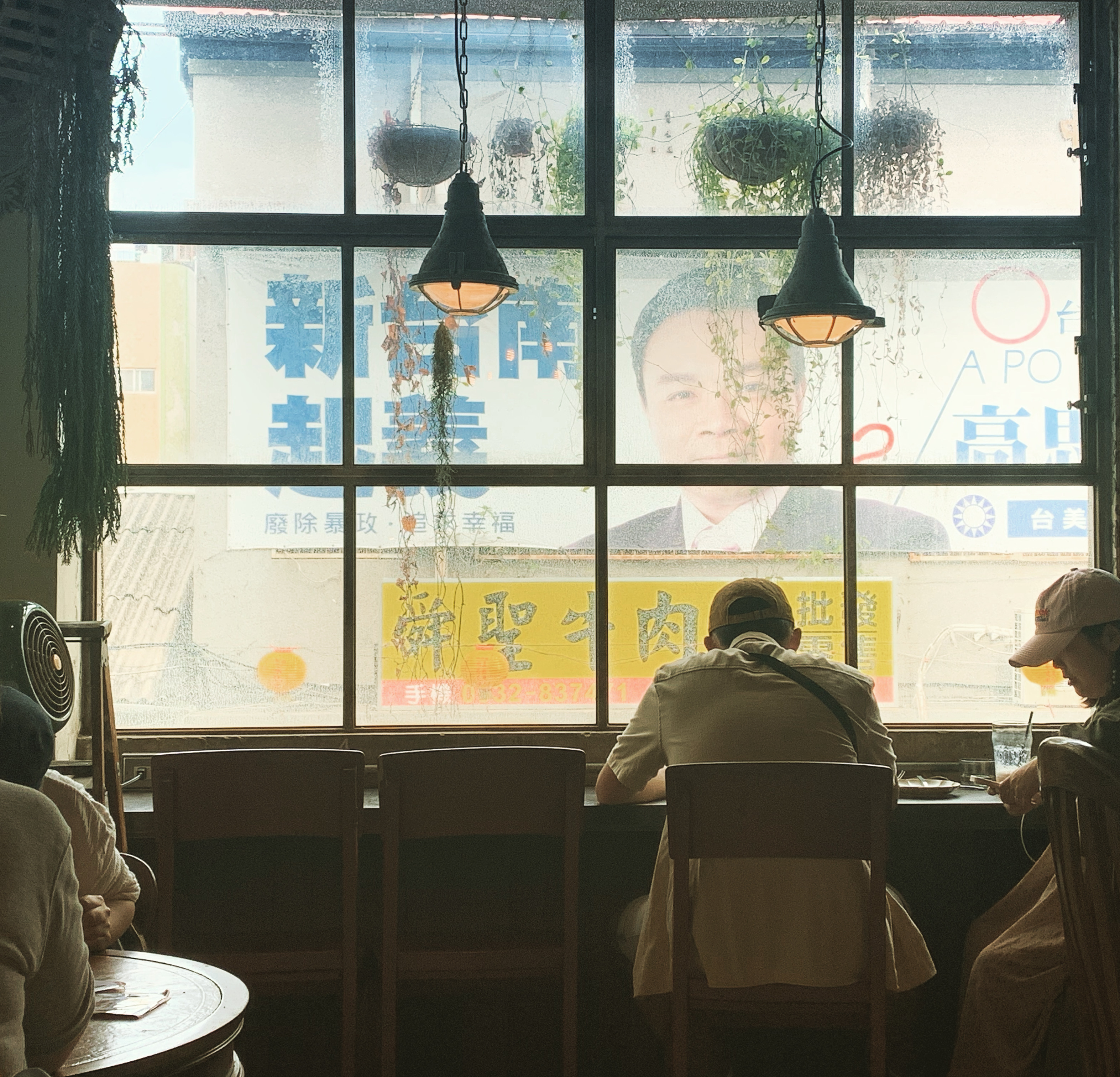
Follow Coffee (花樓咖啡)
Located next to the Water Fairy Market near the intersection of Minquan and Hai'an Roads, this funky cafe has loads of vintage charm, and a great place to get out of the heat midday -- though generally Hai'an Road isn't at its peak in the middle of the day anyway. Note the WWII-era map and the fact that right outside the window is a huge poster for some KMT candidate, smiling at a bunch of Tainan hipsters who almost certainly won't vote for them.

Cafe Bar
This tiny place on Guohua Street (Section 3 #211) run by an interesting guy is one of my favorite chill-out spots in Tainan. It's in an old one-story house and is semi-outdoors, which is fantastic if it's a beautiful day (or night). They only really have coffee and tea, but the coffee is spectacular. So good that they have a perfect 5-star rating even with hundreds of reviews. They open at 9:30 if you need some coffee before getting out into the city -- that's early by my standards -- and stay open until about 10pm, so they're great for an evening chill-out, too. They're about equidistant from Chihkan Tower and Hai'an Road, right around the corner from Tsai Family brown rice wangui (碗粿, savory rice pudding) which makes a good breakfast. They're also not far from 176 Lab, which is basically a massive antique/vintage warehouse that is absolutely worth checking out.

Tainan Fine Art Museum Cafe (Building 1)
Yes, I'm putting a museum cafe on my list. But I promise, you'll love this one. You do have to pay admission to the museum to go, but it's worth it: that ticket will also allow you to explore the museum as well as the 2nd building down the road. The cafe is in the part of the museum that is housed in the Japanese-era police station, and a sign at the entrance offers the most delicious Taiwan-style "fuck you" to authoritarianism that you'll be glad you came. You see, the cafe is housed in what used to be a detention room during eras when political prisoners were common, so "detention" did not necessarily mean you'd done anything wrong. So what did Tainan do when they wanted to preserve the Art Deco architecture of the beautiful old police station, remembering but not lionizing the past? They turned it into a cafe, attached to an art museum specifically dedicated to local fine arts. Another big draw is the outdoor courtyard, which offers a good vantage point to enjoy the Art Deco facade as well as a small garden around a banyan tree.
The museum is not only near the Confucius Temple, but also Zexian Monastery, an overlooked little gem with welcoming nuns and a lovely courtyard.
A Room
A Room is a very cool book-themed cafe in an old house, with drinks and desserts in a chill atmosphere. They have some outdoor seating, and are in a part of town where not a lot else is going on -- quite a distance from anywhere a tourist might regularly go. But, they're not far from some Japanese dormitory buildings (now a historical landmark), an old 'fort' -- some Qing-era fortifications at least -- another Japanese-era building with signs still intact which now sells scallion pancake (府東街147號蔥油餅) and one of Tainan's city gates (the East Gate or Welcome Spring Gate 東門/迎春門). The area also has a Western-style restaurant in an old house (never tried, so I don't know it is) and a few other dessert shops and cafes, such as Murmur (which also has food) and East Town, which I haven't tried but want to. So, in theory, you could make a half day of it. It's hard to get a taxi in this part of town, but there are buses which tend to get very full at peak hours.
Jiajia 加加
Run by Japanese and Taiwanese co-proprietors, this small cafe in an old house a short walk from Sun Hong Ho, Floating and Tin Drum puts an emphasis on good coffee -- they're wild about offering up a fantastic product. They'll make recommendations based on the sort of flavor you want (eg. more floral, nutty or sour) and they sell beans to go. Although I didn't try any food or desserts here, everything looks fabulous.

Sun Hong Ho 順風號
No Tainan cafe listing would be complete without Sun Hong Ho, in a perfectly-restored house east of the Confucius Temple (in fact, in these winding lanes you'll also find a few more cafes on my list, including Tin Drum and Drifting, and it's a beautiful area to walk through, full of vintage architecture). I'm not exactly sure of the history here but either the building or the proprietors were related to the electric fan business in the past, but the old residence is now a cafe with an emphasis on desserts. They also have three adorable shiba inus who are friendly, but will bark at you as you enter. They don't take reservations and do get busy, so I recommend arriving early. They're open for brunch on weekends, and make a good quiche in addition to desserts. The dogs (Lili, Lulu and Lele) are only allowed on the 1st floor, but the most beautiful decoration is on the 2nd.
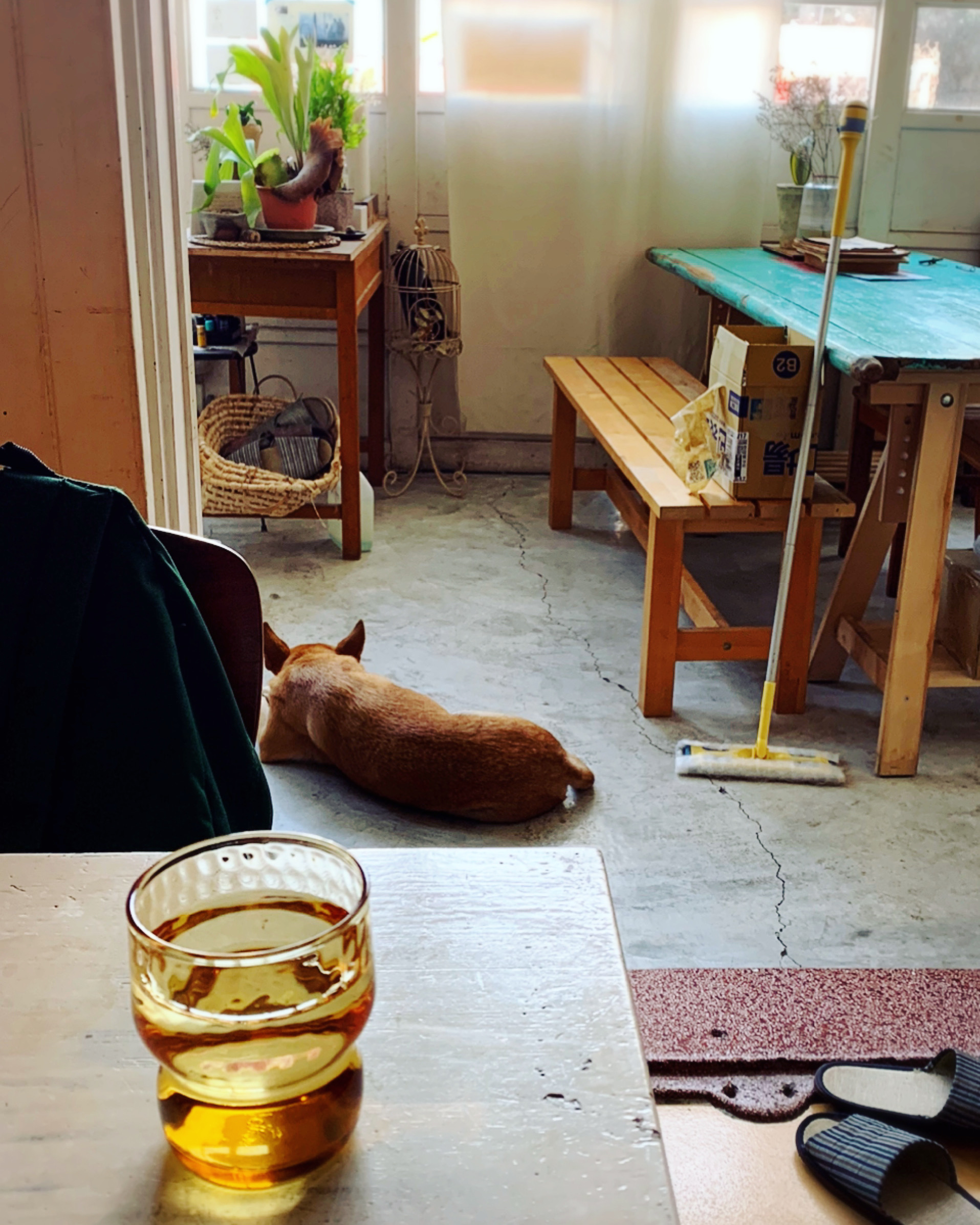
Drifting 浮游
You might be noticing a pattern here -- unlike Taipei cafes, Tainan cafes close on the early side. The same is true of Drifting, but if you're around during the day, it's a funky little place that will get you out of the southern Taiwanese sun. They have a friendly dog who will hang out with you if you take the table near the couch, and have seats in several rooms in an old building. The menu is limited but the coffee is great, and it's about equidistant from the Taiwan Fu City God Temple (the one east of the Confucius Temple, not the one near the North District) and Lady Linshui Temple. It's in the same warren of lanes as Sun Hong Ho and Tin Drum. It's also walkable to a few interesting spots: a couple of bars I haven't tried out yet like Tipsy & Co, Algae Bar, Teabeer and Wanchang (but all of which seem worth a look), the Liu Rui-shan house (劉瑞山古厝, now the Liu Rui-shan church), which is an old Japanese building painted blue with yellow window grilles, and the Japanese-era Tainan County Governor's Mansion. It's also a short walk from Old House 1933 (老厝一九三三) which I've been itching to try -- they serve old-school Taiwanese barbecue in, well, an old house. There's also a Cuban restaurant practically next door. Finally, the very expensive but extremely hip Moss Archives shop is not far away.

Tin Drum 錫鼓
This is one of the most beautifully-preserved Japanese-style houses I've ever had the good fortune of enjoying. Tin Drum also closes early, but you'll be happy you made the trek to sit in such a perfectly-preserved wonder. Located in the same lane as Sun Hong Ho, Tin Drum has a peaceful courtyard, with seats indoors. Take off your shoes, climb on the rock and take a seat on the tatami. The woodwork is so delicate I was afraid I'd break it just by looking at it. It's so picturesque that people come here just to take Instagram shots in the courtyard. They have a full menu, and are especially well-known for their waffles. They're cooked just right, with a bit of crunch on the outside giving way to a softly chewy center.
Pinpeng 品蓬
Just off the shopping street that starts at the old 'chastity arch' across from the Confucius Temple, there's a lane that leads to a small temple with a huge banyan covered in wishing plaques. (There is more than one such arch in Tainan, by the way, but the other is hidden in some back lanes, not visible from a main road). Next to that temple is Pinpeng, which fortunately has later hours than most -- they're open until 10pm. The outside is a typical old house, so well-hidden by the banyan that you might miss it. The inside is surprisingly cavernous and modern, and a thoroughly enjoyable place to relax.
Cheer For
You're probably wondering why I'd pick a cafe in Blueprint Creative Park, attached to a shop, as a "favorite cafe" -- to be honest, they're not specifically a special cafe in and of themselves. You can get standard drinks here, and the indoor sitting area is fine (great, even, if you've just walked a long way to get down to Blueprint and it's a hot day). But I like this place because it's a reliable spot in an area without many options, and if it's a pleasant day and you can score a table outside, especially on a busy day, it's excellent for people-watching. The last time we sat outside here, we watched someone set up a stall selling cottage core dresses and cardigans, attracting a stream of young Millenials and Zoomers checking out ruffled floral-print prairie dresses that were a decade out of style when I was young. It was wonderful.
Hayashi Department Store Cafe
This is another one you might wonder about, but I have my reasons. The summer before last we ended up in Tainan on the hottest day of the year. It was just brutal. We were near Hayashi and decided to look around inside, but after we were done, we still couldn't face the hellfire outside (and Tainan was actually cooler than Taipei that day)! So we went up to the cafe, and I had a refreshing pot of iced honey-scented black tea. Not tea with honey, but tea leaves bred to smell of honey, which are an underappreciated specialty of Nantou if you ask me. No one, even people we know in the US who have received way too many Taiwanese tea gifts from us, has ever failed to comment on how remarkably good it is. The honey tea alone -- and the fact that it's open later than your average cafe -- makes it worth a visit.
Belonginn
This cafe on Shennong Street -- a tourist hotspot, especially at night -- has the distinct advantages of not only being in a popular area, but also being open late. Usually, in Tainan, if you want to just chill out past 5-7pm, you have to find a quiet bar because there won't be many cafe options that aren't chains. I always seem to turn up here long after my ancient body can handle any more caffeine for the day, but the desserts are quite good (they don't have much in the way of actual food) and the flavored sparkling water drinks are good quality.
Fat Cat Story
We haven't actually been to Fat Cat Story since they moved (they had been across the street), but this cafe has a reasonable selection of drinks and desserts, and cats! They're at the quieter end of Shennong Street, on the other side of Kangle, but they close early. When we were last there they also sold an array of cat-themed items, but I'm not sure if that's still the case.
Harbour Fantasy 南方安逸
Very close to Fat Cat Story, Harbour Fantasy isn't exactly a cafe, it's more of a vegan Southeast Asian restaurant with home-style food and a great beer selection. But I'm including them here because they have lots of seating in a cool old house, they're open later than your average cafe and they are totally cool with you just getting some beer and hanging out -- not too unlike a cafe, though I don't think they actually serve coffee. In fact, they're just chill in general, and they have an outdoor table where you can sit on pleasant nights (but wear mosquito repellent, trust me).
